
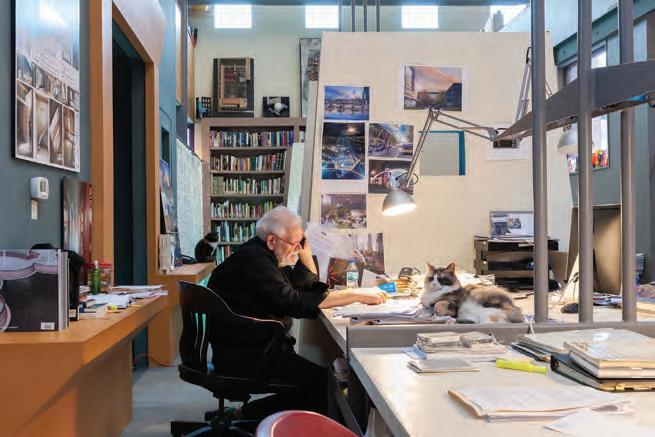












Athletes aren’t the only ones rushing toward the finish line. With just weeks remaining until the start of the JCC Maccabi Campus Games, organizers are eagerly completing the final touches on what will be this year’s largest in-person Jewish youth sporting event worldwide.
Rachael Speck, chief program and innovation officer and games supervisor at the Jewish Community Center of Greater Pittsburgh, said that after more than 12 months of preparation, athletes, coaches, parents and community members can expect a transformative experience.
“This is going to be a global, mega event,” she said.
More than 50 delegations, hailing from North America, the United Kingdom and Israel, are expected to participate in the Aug. 3-8 event. Held in Oakland in partnership with the University of Pittsburgh, the Games are slated to welcome nearly 2,000 athletes.
Historically, each athlete brings along 2.6 guests, Speck said. “With that obviously comes an opportunity to showcase what an amazing Jewish community Pittsburgh is — what an amazing city Pittsburgh is.”
While the Games will enable participants to enjoy Pitt’s world-class venues, several events will tout the region’s robust Jewish offerings. In addition to a community service activity, athletes will attend Jewish Heritage Night at PNC Park on Aug. 5 as the Pirates take on
Additionally, given that the Games are tailored to high school students who may be contemplating post-secondary study, events for parents — organized in partnership with Pittsburgh’s Hillel Jewish University Center and Hillel International — will occur throughout the week, including a panel discussion about Jewish life on campus, a reception at Hillel JUC and a happy hour at Bakery Square.
Introducing guests to the possibilities of Pittsburgh means delivering information and goodies, Speck continued. Thanks to a partnership with Visit Pittsburgh, individuals staying in “Visit Pittsburgh-partnered hotels in Oakland” will receive welcome bags with recommendations of what to see, do and eat while here.
Aiding organizers are nearly 700 volunteers. Assembled by Speck and her colleagues during the past year, the volunteers have already tackled myriad tasks, but the Games are seeking additional assistance.
“We still need volunteers,” Speck said before noting that interested parties should register online at maccabipittsburgh.org.
Lending a hand is one way to get involved. Attending the Games is another.
Games co-Chair Linda Simon encouraged Pittsburghers to register online and attend the Opening Ceremonies on Aug. 4 at the Petersen Events Center.
Along with a parade of athletes, the festival will be emceed by Josh Getzoff, a play-by-play broadcaster for the Pittsburgh Penguins, and

By David Rullo | Senior Sta Writer
Rabbi David Young is aware of the unique position he’s in.
“No one has ever experienced what I’m doing,” he said.
Young began serving as the interim rabbi at Rodef Shalom Congregation on July 1. That's a role meant to help a congregation through a transition — typically it’s the year between the departure of a long-serving rabbi and arrival of a new spiritual leader.
Rodef Shalom and Young, though, are treading unexplored territory.
The Reform congregation’s Rabbi Sharyn Henry recently retired but there’s no mystery or suspense about who will replace her in a year’s time. Rodef Shalom is unifying with Temple Sinai and its rabbi, Daniel Fellman, will assume the leadership of the new, as yet unnamed congregation.
“The mantra among my interim colleagues is, ‘We’re hired by the congregation, but our client is the incoming rabbi,’” Young said. “What makes my role different is that my client is a known factor. My client is Rabbi Fellman.”
Under normal circumstances, Young said, he would be a catalyst for change at the congregation he’s serving as interim rabbi, while allowing its members to get used to someone new in the role.
Instead, Young said, over the next year he’ll help Fellman prepare to shepherd a larger congregation, and will work with the leadership of both congregations as they continue through the unification process.
“If one team is more casual and fly by the seat of their pants, and another team is more regimented and stricter, it becomes difficult to try and figure out how we do things as a unit,” he noted.
Working with Fellman, Young said, provides some stability an interim rabbi might not typically have — especially since the two have known each other for more than two decades.
“When he was in rabbinical school, he worked with my sister and knew my father, so this is a long-term relationship,” Young said.


By Deborah Weisberg
Anotable works and visionary thinking.
In the course of his 58-year career, Lubetz defied convention through his signature use of vibrant colors, geometric designs, and elevated application of glass block and other common building materials.
The Jewish architect’s stand-out designs include the Glass Lofts in Lawrenceville with its tilted, lime-green façade; the Dalzell House residence in Point Breeze with its sculp tural red wedge; the multi-hued Sharpsburg C ommunity Library; and the light-filled Carnegie Library of Pittsburgh branch in Squirrel Hill, which earned an American Institute of Architects Honor Award in 2007.

These works and others were featured in “Action, Ideas, Architecture: Arthur Lubetz/ Front Studio” — the first solo exhibition of a local architect at Carnegie Museum of Art’s Heinz Architectural Center, in 2017.
One of Lubetz’s last projects was The Eddy, a luxury apartment complex in shades of red, green and blue on the Passaic River in Harrison, New Jersey.
Lubetz lived for most of his youth in Squirrel Hill. He established Lubetz Architects in Oakland in 1967 upon graduating from Carnegie Tech (now Carnegie Mellon University), where he cultivated an approach to design that integrated architecture, art and the psychology of how people react to the spaces they inhabit.
He taught for 25 years as an adjunct professor at CMU, where his elective course on the concept of incompleteness was popular with students, according to Steve Lee, the retired head of the CMU School of Architecture.
“The theory behind incompleteness is to create spaces that stir the imagination of the people who are going to occupy them,” said
to know him when he later joined a firm located near Lubetz’s first studio at Bayard and Craig streets in Oakland.
“I would walk a block down the street to visit classmates who worked for Art and I got to know him and his art in that way,” said Lee, who regarded Lubetz’s buildings as “provocative” and a response to the “banal corporate architecture proliferating in Pittsburgh and other cities at that time.”
Lubetz chose color as a way to activate spaces, and used glass block, typically seen in basement windows, as an aesthetic element, Lee said, noting, as an example, the circular Fort Couch Tower in Bethel Park with its striking glass block façade.
Lubetz’s penchant for industrial building materials is evident in the Sharpsburg Community Library, which is clad in corrugated metal paneling in copper penny, silver, red, blue and green, and has concrete flooring and exposed roof trusses.
Color, Lubetz reportedly said at the time, is the easiest button to push to get an emotional response.
He completed that project while working as the Pittsburgh principal at Manhattan-based
Lubetz was with the firm at the time of his death.
A bout of multiple sclerosis in Lubetz’s early 40s affected his mobility but not his drive or creative spirit.
“He basically said ‘I’m not going to beat MS but it’s not going to beat me,’ which I really admired,” said Bob Johnson, one of Lubetz’s longtime friends.
“He would invite himself to parties I had when I was living on the Mexican War Streets, which meant getting himself up three flights of steps to the deck. It wasn’t easy, but he was courageous. I admired him.”
Lubetz was “kind of a curmudgeon … cantankerous,” Johnson said. “He was outspoken. He said what was on his mind and didn’t seem to care what people thought of him. But there was a humorous dimension to it as well.”
With the people in his life he was generous with his time and with supporting them in their goals, said Johnson, an artist-philosopher, who met Lubetz, by chance, at a Strip District restaurant 20 years ago, when a Styrofoam bicycle helmet and baby doll he’d left on his seat piqued Lubetz’s curiosity.
“When I returned from the men’s room,

SUBSCRIPTIONS
subscriptions@pittsburghjewishchronicle.org
412-687-1000, ext. 2
TO ADVERTISE advertising@pittsburghjewishchronicle.org 412-687-1000, ext. 1
EDITORIAL DEPARTMENT
Email: newsdesk@pittsburghjewishchronicle.org
BOARD OF TRUSTEES
Evan H. Stein, Chair
Evan Indianer, Vice Chair
Derek Smith, Treasurer
Gayle R. Kraut, Secretary
Gail Childs, Dan Droz, Malke Steinfeld Frank, Seth Glick, Tammy Hepps, Judith Kanal, Cátia Kossovsky, Charles Saul
GENERAL COUNSEL
Stuart R. Kaplan, Esq.
Jim Busis, CEO and Publisher 412-228-4690 jbusis@pittsburghjewishchronicle.org
EDITORIAL
Toby Tabachnick, Editor 412-228-4577 ttabachnick@pittsburghjewishchronicle.org
Adam Reinherz, Senior Staff Writer 412-687-1000 areinherz@pittsburghjewishchronicle.org
David Rullo, Senior Staff Writer 412-687-1000 drullo@pittsburghjewishchronicle.org
Andrew Rich, Staff Writer arich@pittsburghjewishchronicle.org
ADVERTISING
Amy Weiss, Account Executive (412) 613-0697 aweiss@pittsburghjewishchronicle.org
Art said, ‘Who are you and where are you from?’” It was the beginning of a friendship that would include weekly dinners or lunches and lively discussions about a range of topics.
“We’d pick a book to read and then talk about it,” Johnson said. “I’d sometimes borrow books from his library, which was extensive. He was very well read.”
To call Lubetz larger than life is an understatement, said his widow, Deborah Kaplan Lubetz, hose first date with him — a 3 ½-hour lunch — became a 14-year adventure that included world travels and neighborhood jaunts.
“I fell in love with his vibrancy and vigor. He was passionate about creativity and making the world a more stimulating place, which is why ‘incompleteness’ fascinated him. Once something was complete it was boring.”
Despite his passion for his chosen field, Lubetz had many interests, and had he not become an architect he might have become an animal psychologist, Kaplan Lubetz mused. “He was fascinated by how animals communicate among themselves and with us.”
His beloved felines Za and Ha, named after the late Iraqi-born British architect Zaha Hadid, lived in the couple’s Oakland studiohome — often sprawling on Lubetz’s desk as he worked — along with Kaplan Lubetz’s golden retriever, Diva.
Lubetz also loved babies, his wife said. “Although he had no children, anywhere we went he would watch babies and be totally charmed by them and interested in their behavior.”
“A lot of people didn’t see that side of him.” Lubetz held leadership and board service roles over the years in several organizations, including Community Design Center o f Pittsburgh, Environmental Design Collaborative, Steel Heritage Task Force, Kuuma Trusts, ECCO Foundation and Preservation Pittsburgh.
A memorial service is planned for this fall. PJC
Deborah Weisberg is a freelance writer living in Pittsburgh.
phone number: 412-687-1000 Subscriptions: 412-687-1000, ext. 2
PRODUCTION
Jeni Mann Tough
Production Manager
Carl Weigel
Art/Production Coordinator
Subscriptions subscriptions@pittsburghjewishchronicle.org 412-687-1000, ext. 2
Published every Friday by the Pittsburgh Jewish Publication and Education Foundation 5915 Beacon St., 5th Floor Pittsburgh, PA 15217
Phone: 412-687-1000
POSTMASTER: Send address change to PITTSBURGH JEWISH CHRONICLE, 5915 BEACON ST., 5TH FLOOR PITTSBURGH, PA 15217 (PERIODICAL RATE POSTAGE PAID AT PITTSBURGH, PA AND AT ADDITIONAL MAILING OFFICES)
USPS 582-740
Manuscripts, letters, documents and photographs sent to the Pittsburgh Jewish Chronicle become the property of this publication, which is not responsible for the return or loss of such items.
The Pittsburgh Jewish Chronicle does not endorse the goods or services advertised or covered in its pages and makes no representation to the kashrut of food products and services in said advertising or articles. The publisher is not liable for damages if, for any reason whatsoever, he fails to publish an advertisement or for any error in an advertisement. Acceptance of advertisers and of ad copy is subject to the publisher’s approval. The Pittsburgh Jewish Chronicle is not responsible if ads violate applicable laws and the advertiser will indemnify, hold harmless and defend the Pittsburgh Jewish Chronicle from all claims made by governmental agencies and consumers for any reason based on ads appearing in the Pittsburgh Jewish Chronicle
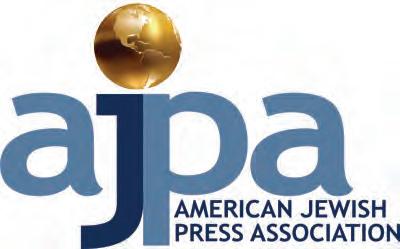



















By Eric Lidji | Special to the Chronicle
The Turtle Creek Valley was lightly populated before George Westinghouse expanded his operations in the 1890s. Then came people. With people, came new boroughs. Wilmerding incorporated in 1890, Turtle Creek and Rankin in 1892, Pitcairn in 1894, East Pittsburgh in 1895, North Braddock in 1897, Wall and Trafford in 1904.
A group of Jewish immigrants from the Austro-Hungarian Empire settled in East Pittsburgh and chartered Congregation Ohav Zedeck Anshai Austria-Hungary in 1904. The first death in the congregation came in 1907 with a teenager named Siegmund Hersh. He was buried on available land in Wilkins Township belonging to Robert and Theresa Breeger. Robert Breeger was an Evangelical Lutheran from Germany who served as tax collector for Wilkins Township and was also caretaker of the nearby Churchill cemetery.
Some months later on Jan. 20, 1908, Helen Gross died and was buried in the same lot. Ohav Zedeck needed a proper cemetery. It purchased some 15,000 square feet of property from the Breegers on Feb. 28, 1908, and established the Ohav Zedeck Cemetery.
By the time Ohav Zedeck founded its cemetery, the Mon Valley was becoming an important Jewish settlement. Braddock and McKeesport were already home to at least 600 Jewish people each, and Jewish families were

moving into nearby small towns. Opportunity was great. So were challenges. When people struggled, there was no public assistance. Everything fell to families and communities. The Free Sons of Judah was one of several Jewish mutual benefits organizations created before World War I. It began in 1890, primarily to cover burial costs. By 1910, it had two lodges in this region: Zion Lodge No. 59 in McKeesport and Moses ben Amrom Lodge No. 158 of Braddock.
With a mandate to assist with burials, the

Moses ben Amrom Lodge needed a cemetery. It returned to the Breegers in June 1910 and purchased a 22,000 square foot lot next to the Ohav Zedeck tract. The national head of the Free Sons of Judah visited Wilkins Township in early 1911 to dedicate gates at the Moses ben Amrom cemetery.
The Free Sons of Judah filed for bankruptcy in 1917. The death rate of its members surpassed estimations, draining the available funds. The McKeesport lodge disappeared, but the Braddock lodge continued. It incorporated in March 1917 as the Independent Order Moses ben Amrom to “furnish financial aid to its members in case of sickness, accident or distress, to provide for the burial of its deceased members and to furnish financial aid and benefits to the widows or orphans of its deceased members.”
There was a third Free Sons of Judah lodge in western Pennsylvania, but it came and went quickly. It was called the David Rosenberg Lodge No. 154 of McKeesport.
David Rosenberg had landed in New York from Hungary as a teenager in the 1880s and later said he walked to western Pennsylvania. After peddling and working at a mill, he opened a grocery in McKeesport. “Through a genuine love of people, a gift for languages, and political astuteness, he became a force to be reckoned with in the Republican party machine of Allegheny County as well as in city government,” Sarah Landesman wrote in 1954, in a history of the Jewish community of McKeesport. “He had a great following among all foreigners and his influence with his coreligionists had much to do
with the quick development of civic responsibility and interest they manifested.”
When the national Free Sons of Judah held its convention in April 1906, Rosenberg was its second deputy grand master. A split occurred that spring. Rosenberg filed incorporation papers in Allegheny County in June 1906 for a new mutual benefits society known as “the Independent Order of David Rosenberg of Western Pennsylvania.”
A few years later, in 1909, the society changed its name to the Independent Order Sons of David. By the late 1920s, the Sons of David had created no less than 20 lodges in this region, including the Sons of David Betty Rosenberg Lodge No. 8 of East Pittsburgh. With a burial mandate of its own, three trustees for this lodge — Peter Rosenberg, Samuel Weiss and Armin Roth — returned to the Breeger family sometime before March 1914 and placed a $50 deposit on a nearly 7,300-square-foot lot next to the Moses ben Amrom Cemetery. They paid the remaining $100 by the end of 1915 and established the Betty Rosenberg Lodge Cemetery. It was named for Peter Rosenberg’s mother, who died in 1911 and was the fourth burial in the Ohav Zedeck Cemetery, just up the way.
Just as this Jewish cemetery complex in Wilkins Township was completed in early 1916, a migration was underway in Pittsburgh. Jews were leaving the city center for emerging eastern suburbs like East End, Squirrel Hill and Homewood. The Squirrel Hill contingent
Please see Turtle Creek Valley, page 17

By David Rullo | Senior Staff Writer
AWestmoreland County prisoner missed a July 14 court hearing when prison officials refused to transport him after he declined to remove his yarmulke, according to defense attorney Tim Andrews.
Andrews said that prison officials initially told either the sheriff’s office or the court that Kort Noel Eckman could not be transported to the hearing because he refused to come.
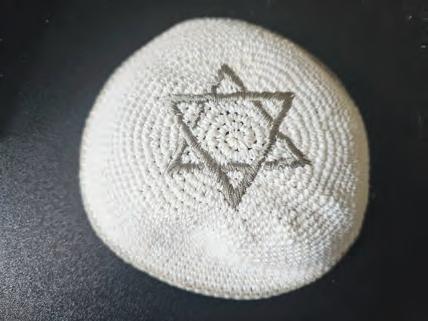
“That was not the case,” Andrews said. “As has happened a couple of past occasions when I’ve tried to speak with him, I was told by people at the jail they couldn’t bring him to speak with me because he would not take his yarmulke off.”
According to Andrews, Eckman was brought to court on two other occasions while wearing a kippah, but that prison officials refused to transport him this time because of a “safety concern.”
Andrews said that concern was related to the possibility of concealed contraband. He said he was told there is a policy at the jail addressing yarmulkes, but he hasn’t seen it.
A prison policy handbook was not available online and the Chronicle’s calls to the prison warden and chaplain were not returned.
Westmoreland County does have a dress code for those visiting the jail which addresses head coverings. It states:
“For ‘security reasons,’ no hats, caps or head coverings will be permitted to be worn by any visitor inside the institution. However,
The FBI is investigating anti-Catholic and antisemitic graffiti at Saint Elizabeth of Hungary Church (Triumph of the Holy Cross Parish) in Baldwin.
According to KDKA-TV, several fixtures, including a statue of the Virgin Mary, a plaque honoring the church’s founder and a door, were vandalized between July 8 and 9. The graffiti included multiple images and phrases, including a swastika and “SS.”
In a statement released by the Pittsburgh Catholic Diocese, Bishop Mark Eckman said the messages “wounded not only the people of this parish but every member of our diocesan family. This holy place, meant for prayer, community and merciful presence of God has been violated in a deeply painful way.”
His prayers, he said, are with those who feel shaken, and their pain is shared.
visitors wearing ‘head coverings’ for various reasons (whether it be for medical, religious, etc.) may be required to produce documentation to corroborate wearing this head covering within the institution. Visitors that must wear a head covering will be taken to a private area and asked to remove it for a visual security check. If they pass this security check, they will be permitted to replace the head covering and continue on with their visit. Those who refuse to remove this head covering for a security check will be asked to leave the building.”
Neighboring Allegheny County Borough of Corrections has a policy permitting head coverings worn for religious reasons. It reads, in part:
“Male inmates of the Jewish faith will be permitted to wear the Yarmulke (skull cap) in all areas of the institution, including at mealtimes, pursuant to the requirements of their religion. They can be removed and

Shawn Brokos, Jewish Federation of Greater Pittsburgh community security director, said she was notified of the incident immediately by Wendell Hissrich, the diocese’s director of safety and security.
“He informed me that it was not just anti-Catholic but also antisemitic,” Brokos said, adding that the Federation is supporting the diocese in its investigation.
Laura Cherner, director of the Federation’s Community Relations Council, said the Jewish community stands in solidarity
searched at any time for security reasons.”
Andrews said that Eckman is religiously observant.
“He’s very strict in his following of religious laws,” he said. “He doesn’t like to be brought up on a Friday for fear that he won’t get back in time to observe the Sabbath and things like that.”
Eckman buys all of his food at the commissary, Andrews said, because Westmoreland County doesn’t supply kosher food for inmates.
Rabbi Moishe Mayir Vogel, executive director of the Aleph Institute, Northeast Regional Headquarters — which provides humanitarian and religious support for Jewish inmates in prisons across the northeastern United States, including in Westmoreland County — said many Orthodox Jews feel obliged to wear a kippah.
A kippah comes at neither a significant cost to the state nor at a risk of security, Vogel said.
“I’ve sat on the phone with the security personal asking them to explain to me, what is the security issue?” he said. “You can make the guy pick up the yarmulke. Years ago, they asked me to do that when I went through the gates at Pittsburgh International Airport. It’s the same thing.”
Every court and prison, he said, has metal detectors, and if that isn’t enough, people can be searched.
“Maybe it’s time that the courts revisit” their policies, he offered.
That includes a kosher food option, Vogel said, noting that the increased cost would be minimal based on the millions already spent on food, something that neighboring
with the Baldwin community and their Catholic neighbors.
“We are outraged by the hateful vandalism targeting St. Elizabeth of Hungary Church in Baldwin,” Cherner said. “Displays of anti-Catholic and antisemitic imagery are attacks on the shared values of dignity, respect and faith that unite our communities.”
Ohio already does.
Vogel said the concern, though, is larger than a simple head covering or food choices. It has to do with the role religion can play in a person’s life.
About 98% of prisoners, he noted, ultimately will return to society.
“The question is, do we want them to come back with something like religion to anchor them and help them become productive members of society, or do we want to destroy them emotionally, spiritually?” he asked.
Recidivism, Vogel said, has jumped from 76%, where it sat for decades, to 83% in the last Pew report.
“We’re failing those individuals, we’re failing their families and in the long run, we’re failing society,” he said.
That failure, Vogel said, is the real security issue that ultimately affects all of society. If prisoners return to the outside world as troubled individuals they may eventually violate parole and reoffend.
Eckman was arrested in connection with the Oct. 3, 2023, stabbing of his mother, Rose Eckman. At the time, she told authorities that her son believed she was a Nazi war criminal and that he jumped on her while she was in bed.
In the case of his client, Andrews said, the judge assigned to the case may have temporarily solved the issue.
“Another hearing has been scheduled for next week and the judge has directed him to be brought up whether he has his yarmulke on or not,” Andrews said. PJC
David Rullo can be reached at drullo@ pittsburghjewishchronicle.org.
The diocese said it hoped to share additional information this week.
Brokos urged anyone who notices anything suspicious to report it to law enforcement and the Federation at jewishpgh.org/form/ incident-report. PJC
— David Rullo

Submit calendar items on the Chronicle’s website, pittsburghjewishchronicle.org. Submissions also will be included in print. Events will run in the print edition beginning one month prior to the date as space allows. The deadline for submissions is Friday, noon.
FRIDAYS, JULY 25, AUG. 22
Gather in Rodef Shalom’s Biblical Garden for a 20s and 30s Kabbalat Shabbat. Get to know other young Jewish professionals and close out the week with apps, wine and great company. Registration required. 7 p.m. 4905 Fifth Ave. rodefshalom.org/lateshabbat.
Join Chabad of the South Hills for Baby Loves Shabbat, music and movement for ages 0 to 3. Challah making and Shabbat songs. 3:45 p.m. 1701 Bower Hill Road. chabadsh.com.
SUNDAYS, JULY 27–DEC. 28
Join Chabad of Squirrel Hill for its Men’s Tefillin Club Services and tefillin are followed by a delicious breakfast and engaging discussions on current events. 8:30 a.m. 1700 Beechwood Blvd. chabadpgh.com.
Join a lay-led online Parashah study group to discuss the weekly Torah portion. No Hebrew knowledge needed. The goal is to build community while deepening understanding of the text. 8:30 p.m. For more information, visit bethshalompgh.org/online-parashah.
MONDAY, JULY 28
Join the Zionist Organization of America for the Kandy Ehrenwerth Memorial Lecture featuring Mitchell Bard presenting “American Colleges and Universities are Selling Out to Middle East Oil Money.” 7 p.m. Free, but reservations are required at pittsburgh@ zoa.org. Jewish Community Center of Pittsburgh.
Join Chabad of Squirrel Hill for Torah and Tea. Learn from three inspirational messages for the three weeks of mourning. 7 p.m. Email caltein@chabadpgh.com for address. chabadpgh.com/tea.
MONDAYS, JULY 28–SEPT. 29
Join the 10.27 Healing Partnership for Roll for Insight: Community-Building Role-Playing Games. Meet every other week to connect and grow with new friends through playing tabletop role-playing games designed to inspire emotional depth. They will use RPGs to explore the intersection of identity, emotional resiliency and games to fight isolation and disconnection, and to meet new people and form friendships. Free. No experience required. 16 and up. 5:30 p.m. Jewish Community Center, 5738 Forbes Ave. 1027healingpartnership.org/rpg-club.
MONDAYS, JULY 28–DEC. 29
Join Congregation Beth Shalom for a weekly Talmud study. 9:15 a.m. For more information, visit bethshalompgh.org.
Join Temple Sinai for an evening of mahjong every Monday (except holidays). Whether you are just starting out or have years of experience, you are sure to enjoy the camaraderie and good times as you make new friends or cherish moments with long-term pals. All are welcome. Winners will be awarded Giant Eagle gift cards. All players should have their own mahjong cards. Contact Susan Cohen at susan_k_cohen@yahoo.com if you have questions. $5. templesinaipgh.org.
WEDNESDAY, JULY 30
Enjoy an hour of nourishment for the mind, body, and soul at Chabad of Squirrel Hill’s Ladies Lunch and Learn Explore words of the heart for the month of Av. Noon. $18. 1700 Beechwood Blvd. chabadpgh.com/lunch.
WEDNESDAYS, JULY 30–SEPT. 3
Join Rodef Shalom Congregation for Biblical Garden Open Door Tours: free, docent-led tours of the congregation’s Biblical Botanical Garden the first Wednesday of the month. 12:15 PM. 4905 Fifth Avenue. rodefshalom.org/garden.
WEDNESDAYS, JULY 30–DEC. 31
Temple Sinai’s Rabbi Daniel Fellman presents a weekly


Parshat/Torah portion class on site and online. Call 412-421-9715 for more information and the Zoom link.
Bring the parashah alive and make it personally relevant and meaningful with Rabbi Mark Goodman in this weekly Parashah Discussion: Life & Text. 12:15 p.m. For more information, visit bethshalompgh.org/life-text.
THURSDAY, JULY 31
Are you looking to incorporate mindfulness into your routine and make meaningful connections with others? Join the 10.27 Healing Partnership for Open Morning Meditation. Engage in individual, quiet meditation for approximately 20 minutes, followed by approximately 20 minutes of group reflection, thoughts and warm community-building. Free; all experience levels, no registration required. 8 a.m. Jewish Community Center of Greater Pittsburgh, 5738 Forbes Ave., Room 316. 1027healingpartnership.org/open-morning-meditation.
SUNDAY, AUG. 3
Join the Pittsburgh Jewish Chronicle book club on Zoom to discuss “Jerusalem: Drawn and Quartered: One Woman’s Year in the Heart of the Christian, Muslim, Armenian, and Jewish Quarters of Old Jerusalem,” by Sarah Tuttle-Singer. The author will join us for the meeting. 1 p.m. Advance registration required by emailing drullo@pittsburghjewishchronicle.org.
TUESDAY, AUG. 5
Join the Jewish Federation of Greater Pittsburgh’s Young Adult Division in recognizing its lay leaders at Jewish Heritage Nightat PNC Park. Come out and bring a guest to celebrate your hard work serving the community over the last year. 5 p.m. $15. jewishpgh.org/event/jhn-pirates.
FRIDAY, AUG. 8
Women are invited to bake and shape flower challahs at Chabad of Squirrel Hill’s Loaves of Love 10 a.m. $12. 1700 Beechwood Blvd. chabadpgh.com/lol.
SUNDAY, AUG. 10

We at the Pittsburgh Jewish Chronicle are working hard to continue to make our publication even more relevant to your needs, and your feedback is important to us. Could you please spare a few minutes to take a brief survey? It shou Id take no more than
5-8 minutes to complete. Your input will help us ensure that during these challenging times the Chronicle continues to serve you and our community in meaningful ways. In appreciation of your help, you will be eligible to enter a drawing for a $100 Giant Eagle gift card.
Visit https://survey.zohopublic.com/zs/jQD9gb to let us know what you think. Or scan this QR code:

Join the Jewish Cemetery & Burial Association of Greater Pittsburgh as it honors those laid to rest this past year during a community unveiling at the Chesed Shel Emeth Free Burial Cemetery, o ciated by Rabbi Eli Seidman. The sacred service includes prayers and remembrance in the spirit of kavod ha-met (honoring the deceased). 11 a.m. 309 Oakwood Street, 15209. jcbapgh.org.
The Pittsburgh Jewish Chronicle invites you to join the Chronicle Book Club for its Aug. 3 discussion of “Jerusalem, Drawn and Quartered: One Woman’s Year in the Heart of the Christian, Muslim, Armenian, and Jewish Quarters of Old Jerusalem,” by Sarah Tuttle-Singer, who will join us for the meeting. From Amazon.com: “On a night in 1999 when Sarah Tuttle-Singer was barely 18, she was stoned by Palestinian kids just outside one of the gates to the Old City of Jerusalem. In the years that followed, she was terrified to explore the ancient city she so loved. But, sick of living in fear, she has now chosen to live within the Old City’s walls, right at the heart of the four quarters: Christian, Muslim, Armenian, and Jewish. ... ‘Jerusalem, Drawn and Quartered’ is a book for anyone who’s wondered who really lives in Israel, and how they coexist. It’s a book that skillfully weaves the personal and political, the heartwarming and the heart-stopping. It’s a book that only Sarah Tuttle-Singer can write. The Old City of Jerusalem may be set in stone, but it’s always changing—and these pages capture that. “
Your hosts
Toby Tabachnick, Chronicle editor
David Rullo, Chronicle senior staff writer
Join the Jewish Cemetery & Burial Association for a community book burial (Genizah) as it honors the tradition of burying sacred Jewish texts and ritual objects. Items will not be accepted the day of burial; call the JCBA at 412-553-6469 for drop-o dates and locations. Noon. Chesed Shel Emeth Cemetery, 309 Oakwood Street. jcbapgh.org.
THURSDAY, AUG. 14
The Summer Soirée is back. Join Chabad Young Professionals of Pittsburgh for a rooftop celebration of friendship, connection and Jewish pride. Sip, mingle and take in the sunset with panoramic views, an open bar and the kind of vibe you wish every summer night had. Good people. Great energy. One unforgettable night. $30. 7 p.m. Over Eden Rooftop Bar. cyppittsburgh.com/summer.
SUNDAY, AUG. 17
Bring a friend and join Hadassah for its Evolve Kick-o event, a fun afternoon of building a new Hadassah presence in Pittsburgh for women in their 20s to 50s. Enjoy a selection of pareve refreshments, learn about Evolve and make new friends. 1 p.m. Address sent with registration. hadassah.org/get-involved/ evolve-young-women.
FRIDAY, AUG. 22
Gather in Rodef Shalom’s Biblical Garden for a 20s and 30s Kabbalat Shabbat. Get to know other young Jewish professionals and close out the week with apps, wine and great company. Registration required. 7 p.m. 4905 Fifth Ave. rodefshalom.org/lateshabbat.
TUESDAYS, AUG. 26-SEPT. 16
Tree of Life Congregation will be o ering a series of four classes to prepare for the upcoming High Holidays. In these sessions led by Rabbi Je rey Myers, attendees will view the film “Bruce Almighty,” followed by discussion questions. Free. 7 p.m. Rodef Shalom Congregation, 4905 Fifth Ave. treeoflifepgh.org.
TUESDAY, SEPT. 9
Join StandWithUs for its Pittsburgh Community Reception. Speakers and honorees include keynote speaker Luai Ahmed, student honorees Miriam Levari and Harrison Romero, community honoree the Pittsburgh Jewish Chronicle and a conversation with Rona Kaufman. 5:30 p.m. Location given upon registration. standwithus. com/2025-pittsburgh-event. PJC
We will meet on Zoom on Sunday, Aug. 3, at 1 p.m.
What to do
Buy: “Jerusalem, Drawn and Quartered.” It is available from online retailers, including Amazon and Barnes & Noble. It is also available through the Carnegie Library system. Email: Contact us at drullo@pittsburghjewishchronicle.org, and write “Chronicle Book Club” in the subject line. We will send you a Zoom link for the discussion meeting. PJC
— Toby Tabachnick


Summer Lee one of just six House members voting to remove defense funding for Israel
Rep. Summer Lee, who represents Pennsylvania’s 12th District, was one of only six House members who voted to remove defense funding for Israel in an amendment introduced by Rep. Marjorie Taylor Greene of Georgia, JNS reported.
The U.S. House of Representatives passed its $832 billion defense appropriations bill with hundreds of millions of dollars for Israeli missile defense, largely along party lines, on July 18, with 216 Republicans and five Democrats voting for it, and 206 Democrats and three Republicans voting against it.
The annual Department of Defense spending bill includes $500 million for “Israeli cooperative programs,” which is divided between Israel’s various tiers of missile defense, including Iron Dome for intercepting short-range rocket and mortar attacks and Arrow for ballistic missiles.
Greene introduced a slew of amendments on July 17 to strip out funding for foreign militaries, including Israel and Jordan, and to bar any funds from being sent to Ukraine.
Just five other members of Congress voted to remove the Israel funding: Reps. Thomas Massie (R-Ky.), Al Green (D-Texas), Ilhan Omar (D-Minn.), Rashida Tlaib (D-Mich.) and Summer Lee, who represents Squirrel Hill.
AIPAC called the amendment
“reckless” and said that the 422-6 vote to defeat the measure “sends a clear bipartisan message about America’s support for our democratic ally.”
NEA board rejects members’ proposal to sever ties with ADL
The board of directors for the National Education Association, the United States’ largest teachers union, has rejected a proposal by its delegates to sever ties with the Anti-Defamation League, JTA reported.
The rejection on Friday night comes after the delegates’ proposal earlier this month to bar the union from using, endorsing or publicizing any materials from the ADL drew condemnation from prominent Jewish organizations across the country.
In a statement announcing the board’s rejection of the proposal Friday, Becky Pringle, the president of the NEA, emphasized that the decision was not a statement of support for the ADL. She also called on the Jewish civil rights watchdog to “support the free speech” of students and educators, in an apparent allusion to criticism of the ADL for opposing some forms of pro-Palestinian advocacy in schools.
The initial proposal approved by the NEA’s delegates offered a striking example of a growing shift away from the ADL by progressives who have soured during the war in Gaza at the organization’s staunch pro-Israel activism and advocacy that treats much criticism of Israel as antisemitism.
The board’s rejection comes a week after the ADL spearheaded a letter signed by 400
July 28, 1845 — Reform rabbis turn away from Israel
Jewish organizations and congregations across the country that called on the NEA to reject the proposal and condemn and address antisemitism within its union.
Bipartisan reps introduce resolution to censure use of ‘globalize the intifada’
Reps. Josh Gottheimer (D-N.J.) and Rudy Yakym (R-Ind.) introduced a bipartisan resolution last week condemning the use of the phrase “globalize the intifada.” The resolution clarifies this as a “call to violence against Israeli and Jewish people across the world,” and urges national, state and local leaders to ban it, JNS reported.
“There should be no ambiguity — ‘globalize the intifada’ is hate speech, plain and simple,” said Gottheimer. “‘The intifada’ refers to a horrific wave of terror attacks that killed thousands of Jews. Globalizing it is a direct call for violence against Jews, and it must be condemned.”
He added that “words like these incite violence, fuel hate and put Jewish families at risk. At a time when antisemitic violence is at record highs, we must stand united to condemn this antisemitic hate speech and take meaningful action to combat rising Jew-hatred.”
New York City Democratic mayoral candidate Zohran Mamdani has drawn a significant backlash for stating that the phrase is a legitimate expression of Palestinian rights, later defending it by claiming that the U.S. Holocaust Memorial Museum used the word “intifada” to describe those Jews
fighting for their lives in the Warsaw Ghetto Uprising in the spring of 1943.
Performer displays PLO flag at London’s Royal Opera House
A cast member at London’s Royal Opera House unfurled a PLO flag during the final curtain call of Giuseppe Verdi’s “Il Trovatore” on Saturday night, prompting a brief scuffle with a venue official who attempted unsuccessfully to remove the flag, JNS reported.
The incident occurred at the end of the opera’s 11-show run.
Video footage from the audience captured the performer standing silently and displaying the flag while the audience applauded. Efforts by an official to confiscate the flag were resisted, with the artist holding on until the conclusion of the curtain call. Other performers stood nearby, some appearing startled as the situation unfolded behind them.
The Royal Ballet and Opera denounced the protest, calling it “completely inappropriate for a curtain call.”
A spokesperson said the act was “spontaneous and unauthorized” and emphasized it was not approved by management, noting the company’s commitment to political impartiality.
PLO flags have appeared regularly at anti-Israel protests amid the ongoing IsraelHamas war. The identity of the cast member remains unknown at this time. PJC
— Compiled by Toby Tabachnick


Items are provided by the Center for Israel Education (israeled.org), where you can find more details.
July 25, 1992 — Nightclub owner
Aris San dies
Aris San, who helped popularize the Greek sound in Israeli music, dies in Budapest at 52. The Greek native’s hybrid music, known as laika , set the stage for the rise of Mizrahi music in the 1970s.
July 26, 1928 — Writer Netiva Ben Yehuda is born
Netiva Ben Yehuda, a writer acclaimed for a trilogy based on her service in the Palmach, is born in Tel Aviv. She advocates the written use of Hebrew slang and co-authors “The World Dictionary of Hebrew Slang” in 1972.
July 27, 1656 — Philosopher Spinoza is excommunicated The Amsterdam Jewish community excommunicates Baruch Spinoza, who becomes one of the leading Enlightenment philosophers, after he refuses to take a payment to be silent about his views on Judaism.
Baruch Spinoza survived
A two-week assembly in Frankfurt-amMain ends after 31 Reform rabbis agree to remove all prayers calling for a return to Israel, reflecting their view that Judaism is not a nationality.
July 29, 1891 — Pregnancy test developer Zondek is born
OB-GYN Bernhard Zondek is born in Wronke, Germany, now in Poland. He and Jewish colleague Selmar Aschheim develop the A-Z pregnancy test in 1928. Zondek moves to Mandatory Palestine in 1934.
July 30, 1992 —
Yael Arad wins Israel’s first Olympic medal
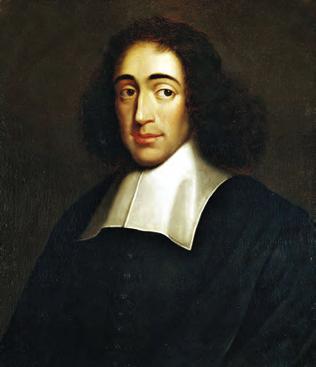

Tel Aviv native Yael Arad, 25, becomes the first Israeli to win an Olympic medal, taking a silver in judo in Barcelona. She dedicates her medal to the 11 Israelis killed at the Munich Olympics 20 years earlier.
p Prime Minister Yitzhak Rabin meets with silver medalist Yael Arad and bronze medalist Oren Smadja on Aug. 31, 1992, to celebrate their Olympic judo success.
July 31, 1962 — Politician Moshe Feiglin is born
Right-wing politician Moshe Feiglin is born in Haifa. A high-tech entrepreneur, he founds an organization to protest the Oslo Accords, then launches a political movement that joins with Likud in 2000. PJC






Becauseweareguestsinyourhome,yourcomfort andtrustareparamounttous.Ourcaregiversare bonded,insured,andsubjectedtorigorous screeningprocesses,includingbackgroundand referencechecksandverificationofcredentials. Ongoingsupervisoryvisitsbymanagementhelp ensurethatourcarecontinuestomeetyour expectations. Phone +1724-713-6336
Website www.ritahomecarepa.com Location Pittsburgh,Pennsylvania
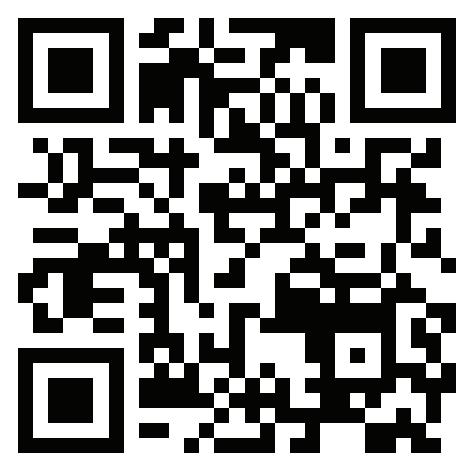


More than a good deed: How volunteering keeps us connected, active and fulfilled
Guest Columnist
Sharyn Rubin

My parents taught me early on that volunteering wasn’t just a good thing to do — it was a vital and expected part of life, not only because caring for others is a deeply rooted Jewish value, but because giving back is a valuable way to learn and enriches our own lives in return. Volunteering is a powerful means of connecting with our community, and we often get much more than we give.
Volunteering can be particularly beneficial for older adults as a way to foster healthy aging. Staying physically active and mentally engaged becomes increasingly important as we grow older, and volunteering offers an easy, enjoyable opportunity to do both.
As we age, maintaining physical health is essential to prevent falls and reduce the risk of chronic illness. Volunteering can be a meaningful way to stay active, often involving the kind of regular, low-impact movement that keeps our bodies healthy. Research from Carnegie Mellon University and studies published in the Journal of Gerontology
show that older adults who volunteer regularly reduce their risk of high blood pressure, have fewer instances of cardiovascular disease and experience better physical functioning, including a delayed progression of physical disability. Therefore, volunteering isn’t just good for the soul — it’s good for the body, too.
The benefits of volunteering extend well beyond maintaining physical health.
Research in the American Journal of Preventive Medicine shows that adults over age 50 who volunteer more than 100 hours per year experience fewer physical limitations, increased physical activity, and many improved psychological and social wellbeing outcomes, including reduced rates of depressive symptoms and loneliness. Other research from the Journal of Gerontology linked formal volunteering with higher levels of cognitive functioning, particularly in the areas of working memory and processing.
Volunteering also provides important emotional support for the challenges that naturally come with aging. Whether coping with the loss of a spouse or friends, moving to be closer to children and grandchildren, or adjusting to new routines, many older adults face periods of grief and loneliness. Fortunately, studies show that staying engaged through volunteering can alleviate some of
those feelings. Research from the Journal of the American Geriatrics Society found that seniors who volunteer are less likely to experience depression. Similarly, another study from the Gerontological Society of America revealed that widowed individuals who began volunteering two or more hours per week experienced such a significant reduction in feelings of loneliness that their levels matched those of married volunteers.
Volunteering is a meaningful way to spend time and a wonderful opportunity to meet new people. It can create structure for the day, offer a sense of purpose and provide something to look forward to. Volunteering can be deeply fulfilling, especially during times when health challenges or loss of independence can make life feel uncertain. By caring for others instead of being cared for, individuals are reminded that they still have much to give and their efforts can make a difference.
Volunteering also indirectly assists organizations financially, allowing them to maximize their resources and expand their impact. In the U.S., the value of hours donated by formal volunteers in 2021 was estimated at over $122 billion. Volunteers help nonprofits’ funding go further, allowing them to provide more goods and services. For example, while a volunteer sits with a hospice patient and offers companionship, a hospice nurse is available to
focus on clinical care and see other patients. With endless opportunities available, there is no doubt that organizations can find a role that aligns with your skills and interests while meeting the needs of those they serve.
Volunteering is not just something seniors can do; it is an activity that can help them thrive. It strengthens the body and the soul, stimulates the mind and connects the heart to the community. Supported by extensive research and countless real-life examples, seniors can make a real difference and our nonprofit organizations can benefit from their experiences.
Ultimately, despite the many personal rewards we gain from volunteering, we do not do it for ourselves. We volunteer because we care about the organizations we support, the causes they advocate for and the people they serve. For older adults, volunteering offers a lifeline to better health, deeper purpose and a meaningful community connection. It’s never too late to give back, and in doing so, to get something invaluable in return. PJC
Sharyn Rubin, MEd, is the director of resident and community services at the Jewish Association on Aging. Those interested in volunteering at the JAA can call 412-5211171, email srubin@jaapgh.org, or visit jaapgh.org/volunteer.





At 2 p.m. every Thursday, nursing home teams across Pennsylvania are logging into more than just another Zoom meeting — they’re joining a movement to improve the lives of tens of thousands of older adults.

But when COVID struck, the need for remote education about infection control became urgent. JHF quickly adapted, launching the first webinars in just five weeks. That emergency response effort evolved into a lasting resource, with more than 200 webinars delivered over five years — and counting.
The Jewish Healthcare Foundation, in partnership with the Pennsylvania Department of Human Services’ Office of Long-Term Living and the Community HealthChoices Medicaid Managed Care Organizations, hosts weekly virtual webinars through the Pennsylvania Long-Term Care Learning Network. This groundbreaking initiative helps long-term care staff — from frontline workers to administrators — access best-practice, expert-led education that directly improves care quality in the state’s 600-plus Medicaid nursing homes.
A partnership to support quality care
Specializing
Office of Long-Term Living is the branch of the Department of Human Services that oversees long-term services and supports for older adults and individuals with physical disabilities, helping them live independently in their communities or care settings.
Multiple
Spinal






Brain
Neuropathy
Community HealthChoices Medicaid Managed Care Organizations coordinate care for Medicaid recipients, ensuring they receive person-centered services that meet both their medical and long-term care needs. Together with JHF, these organizations are ensuring nursing homes get the latest helpful information to improve care for their residents.
Vestibular
Balance
Hand
To turn this education into action, the Learning Network also supports the state’s Nursing Facility Quality Incentive Program — a pay-for-performance initiative that rewards facilities for achieving or improving on critical quality measures, such as reducing rehospitalizations, falls, pressure injuries and the use of antipsychotic medications.
Pelvic

The Learning Network didn’t begin as a virtual education effort. In 2019, JHF proposed to the state a plan to launch five regional in-person teams to improve staff training in Pennsylvania’s nursing homes.

Each week, the hourlong webinars bring together top experts from Pennsylvania and nationwide to present practical tools, share models of care and highlight best practices. Nursing homes from across the state regularly present their own success stories, creating a peer-to-peer learning environment. The sessions are recorded and archived on JHF’s Tomorrow’s HealthCare portal, where facilities can also access presentation slides, tools and additional resources. Materials are also shared through statewide nursing home associations to broaden access.
Topics are diverse and timely. The Network focuses on a new theme each quarter, such as workforce development and retention, transitions of care and clinical management strategies. JHF-led programs — including dementia and end-of-life education, the Teaching Nursing Home model and workforce initiatives — are featured prominently.
The Network’s Operations and Education Committee meets regularly to shape future content and identify subject matter experts. Surveys conducted twice a year ensure programming reflects the needs of providers on the ground.
Making
Today, more than 80% of nursing facilities in Pennsylvania participate in the Learning Network. The results speak for themselves. According to the state, 99% of nursing homes that participated in the Learning Network during any given year were eligible for increased payments through the Quality Incentive Program. On average, facilities receive more than $30,000 annually for meeting quality benchmarks — one of which is attending the Learning Network.
At a time when the long-term care sector faces unprecedented challenges, JHF and its partners at the state and in the Medicaid Managed Care organizations in Pennsylvania are showing the nation what’s possible when education, collaboration and innovation come together — with residents’ well-being at the center. PJC
Stacie Bails-Bonenberger, MOT, OTR/L, is program manager of aging initiatives at the Jewish Healthcare Foundation. Nancy Zionts, MBA, is chief program and strategy officer at the Jewish Healthcare Foundation.





Guest Columnist
Hillary K. Green
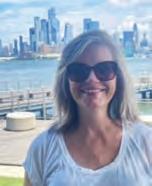
Recent advancements in diagnosing and treating what most laypeople call “dementia” make early intervention more critical than ever. To have a fruitful dialogue about aging and cognitive health, we must establish an accessible vocabulary around dementia. What thoughts come to mind when you hear the word “dementia”? When you imagine a “person with dementia,” what does he or she look and sound like? How would you feel if your doctor diagnosed you or someone you loved with dementia?
Fearful, hopeless, devastated?
Given the advances in dementia diagnosis and treatment, why do we still react so viscerally to the idea of dementia? Some in the field of gerontology believe the term “dementia” is inherently stigmatizing and medically inaccurate and should be changed. Individuals who have a negative “gut reaction” to the term “dementia” may avoid going to a specialist and miss early opportunities for impactful treatment.
I work with older adults, including individuals with age-related cognitive changes. I can attest (anecdotally) that most people
react more fearfully to the idea of having dementia than any other condition. Research conducted by AARP in 2021 confirms that among people 40 and older, Alzheimer’s disease was the most feared disease (more than cancer, stroke and heart disease combined). Using the term “dementia” invokes strong negative emotions that often preclude, interrupt or end constructive discussion about treatment and intervention. The reaction to dementia is like a fire of fear. It is lit by our profound discomfort with any illness characterized as mental (as opposed to physical), stoked by outdated misconceptions that nothing can stop or slow dementia, and sustained by wrongful biases against older adults. It is imperative to change all these corrosive elements to accommodate our graying population (Population Reference Bureau).
One way to quell this proverbial fire is to stop using the term “dementia,” especially in the absence of a formal diagnosis. Terms like “memory loss” and “cognitive changes” accurately describe dementia-like symptoms, without provoking emotions or avoidance. It bears noting that dementia itself is not a disease, but rather an umbrella term for a pattern of symptoms (like impaired memory and thinking, and changes in mood and behavior) with diverse causes. The underlying condition or disease impacts what dementia-type symptoms a person
exhibits. Recent research forecasts that dementia treatment will become increasingly disease-specific or person-specific. This makes early and accurate diagnosis of the underlying cause of an individual’s dementia symptoms more important than ever.
Common causes of dementia symptoms include Alzheimer’s disease, vascular dementia, Lewy body dementia, Parkinson’s disease and Frontotemporal Dementia. Each condition damages the brain in a unique manner although mixed forms often exist with indistinct boundaries (WHO). Alzheimer’s disease, which contributes to 60-70% of all dementia cases (WHO), is caused by a build-up of amyloid plaque chains and tau protein tangles in the brain causing neurodegeneration. Vascular dementia, resulting from stroke, protein buildup, or atherosclerosis (abnormal aging of blood vessels), occurs when brain blood vessels become damaged and cannot deliver enough oxygen and fuel to support brain function (Mayo Clinic). Lewy body and Parkinson’s disease dementia occur when abnormal proteins settle inside the nerve cells (WHO/Johns Hopkins). Frontotemporal dementia involves degeneration of the frontal brain lobe responsible for judgment, learning, planning, voluntary muscle movement, personality and self-control (Cleveland Clinic).




Medications and lifestyle practices (like physical exercise, healthy diet, mental stimulation, social interaction and reminiscence therapy) can slow the progression of these conditions especially with early intervention. The fact that dementia-type conditions are not curable at present should not deter a person from seeking treatment. Advances in diagnosing and treating these diseases are developing rapidly. For example, the FDA recently approved a blood test that can detect amyloid plaques in early-stage Alzheimer’s disease (World Economic Forum). Scientists are actively researching other methods and tools that detect, for example, significant biomarkers, elevated tau levels in cerebrospinal fluid, and abnormal brain patterns (World Economic Forum). Early detection is key because new therapies (antibodies, immunotherapy and medications that target amyloid plaques and tau tangles) show the most promise when administered at an early stage (World Economic Forum). It is my hope that in 10 years, we will no longer fear changes in our memory and cognition. Eliminating the term “dementia” is a small but meaningful step in that direction. PJC
Hillary K. Green is the program coordinator, Memory Café & StoryCorps, of the Jewish Community Center of Greater Pittsburgh, AgeWell at the JCC.
up to 10.1% annual income...and 100% of a nation’s gratitude. With as little as $5,000, our Jewish National Fund Charitable Gift Annuities can provide you with stable, dependable, tax-efficient, and guaranteed income while helping fulfill our mission for the land and people of Israel.
By Family Features
Rising food costs can make healthy eating a challenge for many families. In fact, a poll conducted by Research!America found about 60% of Americans cite the cost of healthy food as their single biggest barrier to achieving better nutrition.
“Food is deeply rooted to family and community,” said Arlen Vanessa Marin, M.S., R.D., a national volunteer for the American Heart Association. “Recipes are passed down through generations, but as grocery prices rise, finding creative ways to stretch your budget while maintaining a nutritious diet is key. Simple swaps — like homemade vinaigrettes instead of sugary bottled dressings, frozen veggies instead of fresh or lentils instead of processed meat — can make a big difference without sacrificing flavor.”
Consider these simple tips from the experts at the American Heart Association, devoted to changing the future to a world of healthier lives for all, to help you enjoy your favorite meals while keeping both your heart and wallet happy.


Protein without the price tag
If you’re looking to add more protein without overspending, try these affordable, nutrient-packed options:
• Beans and other legumes are proteinpacked, high-fiber choices for heart-healthy meals. Add them to soups, stews or salads, or enjoy them as dips with wholegrain crackers or tortillas. Choose canned, no-salt-added varieties for a quick and healthy option.
• Tofu and tempeh are versatile, plantbased staples that are rich in protein. Add silken tofu to miso soup, stir-fry firm tofu with garlic for a heart-smart meal

or add tempeh to noodle dishes and curries.
• Ground turkey or chicken are leaner, often more affordable alternatives to ground beef. For a budget-friendly twist, try them in dishes like turkey picadillo or homemade tacos.
White rice is a staple in many diets, but it can spike blood sugar. When refrigerated and reheated, it can increase resistant starch while also raising the risk of harmful bacteria. Consider these ways to keep it heart-smart:
• Brown rice is a fiber-rich alternative to white rice that pairs well with almost any dish.
• Quinoa is another protein-rich grain that works in soups, salads and side dishes.
• Barley is used in many Asian soups as a whole-grain swap.
Canned, dried and frozen alternatives
Healthy eating doesn’t mean you have to buy everything fresh, especially when fresh food isn’t readily available. Canned, dried and frozen foods can be just as nutritious and help eliminate costly food waste from spoilage as they stay edible longer. Check nutrition labels for lowsodium, no-salt-added and no-sugaradded options.
• Frozen fruits and vegetables are picked at peak ripeness and frozen to lock in nutrients. Use them in stir-fries, soups, smoothies or as quick side dishes.
• Canned tuna is packed with omega-3s, wallet-friendly and easy to mix with salads, sandwiches or in brown rice bowls.
To find more tips and budget-friendly recipes, visit recipes.heart.org. PJC












Guest Columnists
Adrienne Walnoha and Eashwari Samant


Your home is more than just four walls and a roof — it’s a living, breathing extension of your family’s story and legacy, and your biggest financial asset. As homeowners, particularly those in our vibrant senior community, understanding how to evolve your home can transform your daily living experience and your longterm comfort — physical, emotional and even financial.
Your home as a haven
Homes are about memories. The kitchen that saw the baby’s first steps. The living room that saw years of holidays. The patio where little fights were resolved over a game of catch. These emotional connections make your home irreplaceable while highlighting why thoughtful evolution — rather than reactive repairs — serves both your heart and your future.
There’s healing power in the walls that know your story, which is why preserving the “feel” of your home — its soul — is critical even as its function evolves. Research consistently shows that aging at home contributes to better mental health outcomes, with familiar environments providing comfort and continuity during life transitions.
With some of the oldest housing stock in the nation — with a median housing age of 57 years — our state presents unique opportunities for value creation through thoughtful, long-term planning of home improvements.
The median home value in Pennsylvania has appreciated steadily, with well-maintained older homes outperforming newer construction at times. However, Pennsylvania’s challenging terrain and infrastructure mean that deferred maintenance compounds exponentially. A $3,000 repair today prevents a $15,000 replacement tomorrow, especially given the region’s volatile weather patterns.
Smart financial planning recognizes that home improvements aren’t isolated projects, but interconnected investments spread out over the long term to protect your biggest asset. This coordinated approach reduces overall labor costs while maximizing home value and the living experience.
The key is viewing improvements through a portfolio lens. Bath and kitchen renovations typically have the highest ROI, while accessibility improvements often pay for themselves through avoided moving expenses and increased safety. For the commonwealth’s large senior population — projected to reach 3.8 million by 2030 — strategic accessibility improvements are essential.
Your home’s bones tell its story, and in Pennsylvania, that means pre-war craftsmanship meeting modern demands. The state’s hilly terrain, freeze-thaw cycles, and aging utility systems create unique structural considerations that require forward-thinking solutions.
The physical evolution of your home should anticipate and precede your life’s progression. Wide doorways that accommodate future mobility aids, bathroom layouts for easy wheelchair access, and stair railings that provide support while enhancing aesthetics. These are intelligent design decisions that serve any homeowner.
Foundation issues in older Pennsylvania homes often stem from inadequate drainage — a problem exacerbated by our topography. Proactive water management prevents costly structural damage while creating opportunities for customization of the basement space. Similarly, upgrading electrical systems creates capacity for modern living and smart home automation using IoT and machine learning to deliver safety and energy efficiency.
Pennsylvania’s skilled labor shortage means that coordinating multiple improvements simultaneously often proves more cost-effective than short-sighted piecemeal projects that spring up every other year. When you address your home’s structural needs strategically and preemptively, you optimize your future living experience while saving costs.
Start small, start now
You don’t have to be a visionary with a decade-long plan. Just starting with reflection and documentation can help greatly. After all, you’ve known your home for the longest time! Ready to begin evolving your home? Start with these steps:
• Pen down your own living goals for the future and identify spaces of comfort within your home.
• Document your home’s maintenance and renovation history to identify patterns and plan future improvements.
• Consider getting a comprehensive home assessment.
• Complete the NCOA Falls Prevention Checklist to identify immediate safety improvements.
• Download the AARP Home Fit Guide for room-by-room accessibility planning.
Homes are the oases of life. With proactive planning, they can continue to serve your family’s evolving needs while building lasting, generational value. The question is: How will you choose to write your home’s next chapter? PJC
Adrienne Walnoha, MSW LSW, NAHB CAPS, is the director of community health initiatives and compliance at Havenside and a prominent voice of advocacy within Pittsburgh’s age-friendly communities. Eashwari Samant leads product strategy and marketing communications initiatives for Havenside, with a professional background in human-centered design and innovation. Havenside is a specialty construction group with a track record of 6000-plus home improvement projects — renovations, remodels, safety and accessibility — in southwest Pennsylvania.





At Concordia, we provide comprehensive care at our many locations in western PA or in your own home –all backed by 140+ years of experience. We have you covered with outstanding retirement living, home health, skilled nursing, personal care, hospice services and more.



Learn more about our mission, services and career opportunities at www.ConcordiaLM.org or connect with us on social media.



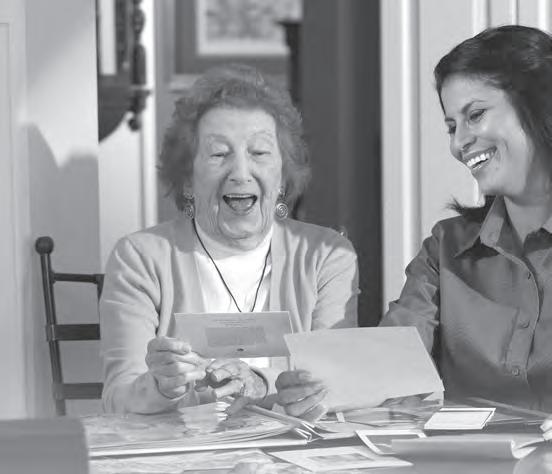


By Family Features
Glaucoma, one of the leading causes of permanent blindness, often does its damage silently — with no noticeable symptoms — as vision is lost. Glaucoma affects an estimated 3 million Americans, but most people don’t know they have the condition until it’s revealed in an eye exam.

Once vision is lost, it cannot be recovered. If left untreated, glaucoma can cause blindness. That’s why when it comes to detecting and treating glaucoma, the earlier, the better.
What is glaucoma?
Glaucoma is an eye disease caused by increased pressure in the eye, which can damage the optic nerve and reduce vision, sometimes making objects look blurry or dark. Early on, most people don’t notice what’s happening, but as glaucoma progresses, you may notice some loss of peripheral vision. By this point, the disease has progressed significantly toward blindness and treatment options may be limited.
Regular eye exams, including specific glaucoma tests, are important for the early detection and diagnosis of glaucoma. If diagnosed early, an eye doctor can recommend treatment to manage glaucoma and help prevent vision loss.
“Many patients are surprised to learn glaucoma often presents with no initial symptoms,” said Oluwatosin U. Smith, MD, glaucoma specialist and ophthalmologist at Glaucoma Associates of Texas. “That’s why routine, comprehensive eye exams are so vital. These screenings allow us to detect glaucoma in its earliest stages, often before any vision loss occurs. Early diagnosis and treatment are the cornerstone of effective glaucoma management and it empowers us to take proactive steps to protect your vision.”
To check for glaucoma, your eye doctor tests your eye pressure, peripheral vision and overall eye health. The painless screening is the only way to accurately diagnose the condition and determine appropriate treatment.
For decades, prescription eye drops have been the most common treatment to help
lower eye pressure and slow the progression of the disease.
Although prescription eye drops are commonly prescribed and generally effective at lowering eye pressure, they can cause challenges and unwanted side effects, including redness, irritation, burning, stinging or difficulty putting them in the eye. In addition, patients may find it difficult to remember to take their eye drops every day, and missing doses — even by accident — can put vision at risk by allowing eye pressure to rise unchecked.
When prescription eye drops are unsuccessful at controlling eye pressure or managing glaucoma, an eye doctor may change treatment by prescribing additional prescription eye drops, which can make the challenges and inconveniences associated with prescription eye drops worse.
Modern glaucoma management is evolving with a shift from reactive — that is, take prescription eye drops and “watch and wait” until glaucoma progresses before exploring alternative treatment — to proactive management.
Taking a proactive approach to glaucoma treatment means choosing a minimally invasive procedure earlier in the treatment journey to help slow the progression of glaucoma and minimize vision loss while reducing the challenges of daily prescription eye drops.
“The shift toward a more proactive
approach represents a significant advancement in how we manage glaucoma,” Smith said. “Traditionally, we waited for vision loss before a procedural intervention. However, with modern minimally invasive procedures, we can now proactively lower eye pressure and protect the optic nerve much earlier. This approach helps us preserve our patients’ vision and quality of life for longer. I encourage anyone with a glaucoma diagnosis, or those with risk factors, to discuss proactive options with their ophthalmologist.”
• Procedural pharmaceuticals, or drug delivery systems, may include tiny, FDA-approved implants that deliver medication continuously to help lower eye pressure and protect vision.
• Micro-invasive, or minimally invasive, glaucoma surgery involves less-invasive procedures, devices (such as stents) and techniques with faster recovery times than traditional surgeries.
• Laser treatment commonly involves a laser being aimed through a special lens onto the drainage system of the eye, triggering a natural change that helps fluid drain from the eye to lower pressure.
These treatments may be used in combination with prescription eye drops or on their own.
If you or a loved one has been diagnosed with glaucoma, visit livingwithglaucoma.com to learn more and help manage the condition. PJC







By Family Features
These days, wellness information is practically everywhere you turn. Do this; don’t do that. Eat more of this; eat less of that. This is good for you; that is bad.
It can be hard to cut through all the noise, but the reality is, when it comes to something as serious as your heart health and LDL choles terol — the “bad” cholesterol — ignoring it can be downright dangerous for your health.

According to the American Heart Association, about every 40 seconds, someone in the United States has a heart attack, and strokes occur at about the same frequency.
High LDL cholesterol, often called “bad” cholesterol, significantly increases your risk of heart disease.
A poll conducted by The Harris Poll for the American Heart Association revealed 75% of heart attack and stroke survivors reported having high cholesterol. Yet nearly half (47%) of heart attack and stroke survivors are unaware of their LDL cholesterol number. This lack of awareness shows more knowledge is needed to help survivors proactively manage their health.
In fact, knowledge is key to reducing your risk of heart disease. Understanding the impact of LDL cholesterol and knowing your LDL number can help you make informed decisions.


Cholesterol: The good and the bad Cholesterol is a waxy, fat-like substance your body needs to build cells and produce hormones. However, not all cholesterol is created equal:
• LDL (low-density lipoprotein) cholesterol: This is the “bad” cholesterol. When too much LDL cholesterol circulates in the blood, it can build up in the inner walls of the arteries that feed the heart and brain, forming plaque that can narrow and eventually block these arteries, leading to heart attack or stroke.
• HDL (high-density lipoprotein) cholesterol: Known as the “good” cholesterol, HDL helps remove the “bad” cholesterol from the arteries, protecting against heart attack and stroke.
Many people think high cholesterol has obvious signs, but that’s not always the case. In
fact, about half of U.S. adults and 42% of heart attack and stroke survivors mistakenly believe high cholesterol has clear symptoms. However, high LDL cholesterol typically doesn’t show any signs, which is why it’s known as a silent threat to your heart.
People who have had a heart attack or stroke are at higher risk of future cardiovascular problems, which is why it’s important to monitor your cholesterol regularly to help prevent future events.
It’s also important to know high LDL cholesterol can be genetic, meaning someone who eats a healthy diet and exercises regularly can still have high cholesterol. Additionally, the risk of high LDL cholesterol increases with age.
That’s why the American Heart Association’s “Lower Your LDL Cholesterol Now” initiative, nationally sponsored by Amgen, emphasizes the importance of regular cholesterol checks regardless of your weight, diet and physical activity levels. Knowing your LDL cholesterol number — and understanding the target levels based on your health history — gives you the opportunity to manage your health proactively. This enables you to make informed decisions to prevent future heart issues.
You can reduce your risk of a heart attack or stroke by knowing and addressing your LDL cholesterol number.
Working closely with your doctor allows you to actively manage high LDL cholesterol — often a key risk factor you can help control – and together, you can develop a personalized
treatment plan. Ask your doctor or health care provider for a cholesterol test to know your LDL number. Understanding your cholesterol number is the first step toward managing it effectively. If necessary, appropriate management of your LDL cholesterol can help reduce your risk of a heart attack or stroke.
Your doctor may also talk with you about your personal and family medical history; previous heart-related medical events such as a heart attack or stroke; lifestyle habits such as tobacco use, obesity, unhealthy living or aging; racial and ethnic backgrounds; and reproductive health.
When it comes to your cholesterol, guidelines from the American Heart Association and the American College of Cardiology recommend “lower is better” to reduce your risk. Studies show that an LDL number or below 100 mg/dL is ideal for healthy adults. If you have a history of heart attack or stroke and are already on a cholesterol-lowering medication, your doctor may aim for your LDL to be 70 mg/dL or lower.
Talk to your doctor about the right treatment plan for you. Positive lifestyle habits, such as exercising and eating a healthy diet, may also help.
However, if you’ve had a heart attack or stroke before, lifestyle changes alone may not be enough to lower your risk of another event. Your doctor may recommend cholesterol-lowering medications to protect your heart health. Learn more about LDL (bad) cholesterol by visiting heart.org/LDL. PJC







•Enjoy fresh, affordable lunches daily at the J Cafe.
•Stay strong and active with older adult fitness classes and wellness programs.*

•Connect with others through lively clubs and community meetups.
•Explore enriching programs tailored specifically for older adults.
•For more information about AgeWell at the JCC Squirrel Hill, contact Darlene Cridlin- LCSW, dcridlin@jccpgh.org or 412-697-3517
•For more information about AgeWell at the JCC South Hills, contact Hayley Maher Krebs, hmaher@jccpgh.org or 412-697-3552
Maccabi:
Continued from page 1
feature Montana Tucker, an American dancer, singer and social media star, who frequently shares pro-Israel content with her 9 million TikTok followers.
“She’s really found a unique way to connect with a teen audience, and we’re really excited to have her as our star guest for the opening ceremonies,” Speck said.
Additional guests slated to attend the Games include American-Israeli basketball player Tamir Goodman, Israeli judo champion and Olympic medalist Or Sasson, French-Israeli UFC fighter Natan Levy, as well as DJ Artifex, a survivor of and performer at the Nova Music Festival, according to the JCC Association of North America.
Rabbi:
Continued from page 1
“We have this blessing where we get to really enjoy a year together.”
Young, who grew up in Cincinnati, Ohio, began his rabbinate after graduating from Hebrew Union College-Jewish Institute of Religion in 2006. Following his ordination, he was named an associate rabbi at Temple Sinai of North Dade in Florida. He traded the East Coast for the West Coast when he became the rabbi at Congregation B’nai Tzedek in Fountain Valley, California, in 2013. He held the role for the next 10 years.
Thinking he’d never need it, Young took interim rabbi training in 2021 because, he explained, he thought the skills might be useful as his congregation made its way out of the COVID lockdown.
“Then in 2023, my wife was offered a job that we couldn’t refuse as a family,” he said. Young and his wife, Natalie, share a unique history. They were the only rabbi/cantor pair that entered HUC already a couple, Young said. She serves as cantor at Beth Emet The Free Synagogue in Evanston, Illinois. They have three children.
Young put his interim rabbi training to use — serving first at KAM Isaiah Israel in Chicago and then at Congregation Beth Israel in Austin, Texas, before accepting the role at Rodef Shalom.
He’ll spend the next year helping Rodef
Continued from page 4
started Beth Shalom in 1917 and dedicated a “community house” in 1923.
Chofetz Chaim was the second Jewish congregation in Squirrel Hill. It began meeting as early as 1923 and incorporated in 1925. As a firstmover for traditional Orthodoxy in the fastest growing Jewish section of Pittsburgh, it likely expected to soon have the resources to build a grand house of worship. But with the opening of the beautiful new Poale Zedeck synagogue in 1928, Chofetz Chaim was suddenly behind.
In a burst of activity, Chofetz Chaim hired Rabbi Aaron Mordechai Ashinsky as its spiritual leader, converted a house on Beacon Street into a small synagogue in 1930, started a sisterhood and religious school in 1931, and began looking for a cemetery.
The Jewish population of the Turtle Creek Valley peaked in the late 1920s with more than 2,500 people spread across nine towns and five synagogues. By the late 1930s, the data reveals a shift: The Braddock community had shrunk by one third. Amid this shift, the Moses ben Amrom Lodge sold its burial ground to Chofetz Chaim for $650 in 1934. Chofetz
The Games hold undeniable significance, Simon said, as they not only spotlight top athletes and performers, but also give Jewish teens a chance to connect. “For many of these kids, it’s their first Jewish experience.”
“As one of the most significant touchpoints for Jewish teen engagement across the continent, JCC Maccabi ignites identity, belonging, and leadership in our teens, coaches, and volunteers — and reminds us of the power of community,” Barak Hermann, president and CEO of JCC Association, said in a statement.
The Pittsburgh Games, organizers told the Chronicle, can foster peer connections and greater ties to the Jewish state. The hope comes on the heels of data released last month by Pew Research Center that “younger people are more likely than older people to have an unfavorable view of Israel.”
According to researchers, the greatest disparity occurred in “high-income countries surveyed,” including, Australia, Canada, France, Poland, South Korea and the United States.
For teenagers who may be encountering their first Jewish experience through the Games, Simon said, it’s essential to convey that though this may be an initial step on a Jewish path, “they are not alone on this journey, they’re part of a greater community and there are more wonderful things to come.”
Fara Marcus, JCC’s chief development and marketing officer, credited the wider community with ensuring the Games’ success.
To date, organizers have raised $3.5 million. The sum, Marcus said, “is more than just a financial achievement — it’s a powerful statement of belief in our mission. This level of support ensures the seamless operation of

Shalom and Temple Sinai become a unified congregation.
He said he’s already started to plan not only Shabbat services and lessons, but also the schedule for the upcoming High Holidays as well as the location of events and services.
Special attention, he said, is being paid to life cycle events because, in many cases, invitations have already been sent, and plans have been made. The intention is to have both congregations present at those celebrations.
“We’re not going to separate unless they’re the same weekend and then we’ll have one at Rodef Shalom and one at Temple Sinai,” he said.
When he’s not on the pulpit, Young calls
Chaim soon replaced the cemetery gate that had been installed in 1911.
The 1920s and 1930s saw growth in a ring of communities nestled between the city limits and the Turtle Creek Valley, places like Wilkinsburg, Swissvale, Edgewood and Forest Hills. A survey of Wilkinsburg in 1936 found 100 Jewish families. They started Beth Israel Congregation later that year. Among them was Peter Rosenberg. Betty Rosenberg Lodge No. 8 began fading. Armin Roth died in 1937. Samuel Weiss died in 1944. Both were buried in the Ohav Zedeck Cemetery. Left without his two original partners, Peter Rosenberg brought together a new group of men in 1948 to incorporate the Betty Rosenberg Cemetery Corporation to oversee the old cemetery.
Betty Rosenberg was never the official cemetery of Beth Israel, but it was extensively used by two of leading Wilkinsburg families: Rosenberg and Reich.
World War II ended. Growth resumed. The first section of the Parkway East opened in 1953. Young families followed the new highway to Penn Hills, Churchill, Eastmont and Monroeville. Some were Jewish. Harry Katz hosted a Friday night service at his home in June 1954. By the end of the year, Parkway Jewish Center was born.
the 2025 JCC Maccabi Campus Games and reflects our community’s deep commitment to Jewish identity, youth engagement and global connection.”
Simon said she’s proud of Pittsburgh and its effort to support young Jewish athletes. She hopes community members “come take part in this once in a lifetime experience.”
Though some content will be shared via social media channels, the full experience of the opening ceremony and games is reserved for in-person attendees. Registration is available at maccabipittsburgh.org.
Whether participating as an athlete, coach, volunteer or spectator, this is a chance to “celebrate Jewish life and Jewish joy,” Speck said. “What an opportunity for Pittsburgh.” PJC Adam Reinherz can be reached at areinherz@pittsburghjewishchronicle.org.
evaluating a possible unification with Temple Sinai, so it was looking for someone who could fill the traditional interim rabbi role while also offering a skillset that would help if the two congregations decided to unify.
Battistone said Young’s excitement about working with the two congregations during the unification process sold him as the right person for the role.
Battistone is quick to note, though, that this wasn’t a singular decision. Rodef Shalom, he said, put together a search committee and even consulted with Temple Sinai as it went through the process of hiring Young, “because we knew that depending on the status of the unification, he was going to be providing some services for them.”
“I go to the movies; I play Dungeons & Dragons every week with a group of rabbis. I play guitar and drums. I cook. I read comic books,” he said.
The nerd title is something he wears on his sleeve. Young is the co-host of “Torah Smash,” which bills itself as “the podcast for nerdy Jews.”
Rodef Shalom President Bill Battistone said that Young has “tremendous experience and background.”
“I think he fits exactly what our congregation and community needs at the moment,” he said.
When the congregation first began searching for an interim rabbi, it was still
The new congregation needed a cemetery. It spent almost 10 years trying to work out a deal with Sons of Israel in Rankin but was never able to reach agreeable terms.
By spring 1969, Parkway Jewish Center was negotiating with three remaining families at the Betty Rosenberg Cemetery. The two sides worked out acceptable terms in March 1970. They would split the grounds. Parkway Jewish Center would purchase as many as 93 plots. The deal was finalized at a board meeting on April 14, 1970.
A few weeks later on May 4, 1970, Parkway Jewish Center congregant Allison Beth Krause was one of the four students killed by National Guard troops at Kent State University. Parkway Jewish Center had barely had time to mark its new burial ground, and so national coverage of her burial all mentioned the “Betty Rosenberg Cemetery.”
As suburbanization was underway in the eastern boroughs in the early 1950s, developers were also planning suburban-style developments throughout Pittsburgh.
The new Bigelow Heights development more than tripled the Jewish youth population of Greenfield in just a few years. This burst of people rejuvenated B’nai Emunoh Congregation, which had been somewhat
“We’re really excited to bring in Rabbi Young and have him work alongside Rabbi Fellman and Cantor Reinwald to help us through this next phase of the unification process,” he said.
For Young, serving as an interim rabbi allows him to exercise his creative side.
He’s not sure what the future holds, noting that eventually he’d like to live in the same city as his wife and family, but said he finds satisfaction in his work.
“I am the poster child for the aphorism, ‘If you love what you do, you’ll never work a day in your life.’” PJC
David Rullo can be reached at drullo@ pittsburghjewishchronicle.org.
small since opening in the 1920s.
With the passing of the immigrant generation, shteiblach throughout the region began closing in the 1960s and 1970s. Chofetz Chaim had fewer than 15 members by the early 1970s. It sold its cemetery to B’nai Emunoh in November 1985 for $1 with the understanding that the grounds would always be available to former members of Chofetz Chaim, as well as the long gone Independent Order Moses ben Amrom.
Ohav Zedeck closed its East Pittsburgh synagogue by the late 1960s and sold its cemetery to Yeshiva Achei T’mimim in November 1986. Westinghouse closed its East Pittsburgh facility in early 1988, bringing an end to a century in the Turtle Creek Valley.
Altogether, this trio of modest cemeteries hidden off Negley Road in Wilkins Township totals just 44,354 square feet. What other acre of Western Pennsylvania is so reflective of the many movements and changes of Jewish life throughout this region? PJC
Eric Lidji is director of the Rauh Jewish Archives at the Heinz History Center and can be reached at rjarchives@heinzhistorycenter. org or 412-454-6406.
Summer Lee and I are both tired — but for very different reasons
Guest Columnist
Andrea Beth Goldschmidt

The Congressional House Committee on Education and Workforce held a hearing on July 15, “Antisemitism in Higher Education: Examining the Role of Faculty, Funding, and Ideology.” It was one of many such hearings over the past year and a half, as a rising (and seemingly never-ending) tide of anti-Israel/ anti-Jewish sentiment has swept through our campuses and communities. Summer Lee, the Democratic congresswoman representing Pennsylvania’s 12th District (which includes Squirrel Hill, home to Pittsburgh’s largest Jewish community and the site of the 2018 synagogue shooting), made remarks that convinced me, once and for all, that she has no interest in fostering any sort of allyship with the mainstream Jewish community.
Lee began by noting that despite this being the ninth congressional hearing on antisemitism since she took office, there have been no hearings on hatred directed toward other minority groups — particularly the Black and Muslim communities. She then lamented her dashed hopes that the hearing, or any of the other eight hearings she’s sat through, would reveal the root causes of antisemitism.
Despite my skepticism about the sincerity of Lee’s remarks given her history of divisiveness as relates to the Jewish community — from her minimal engagement with the Jewish community in the aftermath of Oct. 7, to her offensive acknowledgement of the year anniversary of the massacre and refusal to condemn antisemitic slogans and images
during the campus protests over the past year — I found myself agreeing with her on one point. What I heard is that she is tired of yet another hearing on antisemitism — and as a Jewish resident of Squirrel Hill, I too am tired.
I am tired of another hearing that leads to no real change in the educational climate around Judaism and Israel. (Indeed, just last week the National Education Association voted to forward a recommendation not to
they would immediately, and emphatically, call out against any other minority group, simply because it is directed toward Jews. I am tired of worrying that any attempt to stand up for myself, my family, or my community will be used to reinforce antisemitic tropes about Jewish power, pushiness and entitlement. I am tired of wondering if my academic colleagues blame me for their funding being withdrawn, for their DEI offices being shut down, for ICE targeting
I am tired of worrying that any attempt to stand up for myself, my family, or my community will be used to reinforce
antisemitic tropes about Jewish power, pushiness and entitlement.
use, endorse or publicize materials from the Anti-Defamation League, or participate in any of its programming, apparently paving the way for public school teachers to teach their K-12 students a biased and misinformed view of the conflict, which demonizes the world’s only Jewish state; the NEA board ultimately rejected the proposal.) I am tired of waking up each morning wondering what fresh form of anti-Jewish ostracism, hatred and outright violence has become normalized and acceptable in our society. I am tired of wondering if my Magen David, or my last name, or my son’s kippah, are the reason the restaurant server treated us poorly. I am tired of hearing about the many ways our “liberal allies” continue to excuse or deny bigotry
My inconvenient Jewish fear
Guest Columnist
Debra Messing
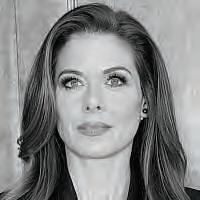
Years ago, I stood on a stage in Ohio, holding a microphone and wearing a campaign button. I had been invited to speak on behalf of a presidential candidate, someone I believed represented the best of what America could be. It wasn’t the first time I’d done that. I’ve campaigned for nearly every Democratic nominee in my adult life. That’s how deeply I believe in the promise of progressive politics.
We are taught that movements built on justice always expand. And for most of my life, that’s what I felt. I’ve spoken out, marched, signed petitions, testified before Congress, and shown up for communities facing injustice, violence and inequity, for people who felt unseen or unsafe. I’ve done it because I believe deeply that we all deserve dignity and protection.
For 25 years, no one has questioned my commitment to social justice. But now, when the people being threatened are my own, when I speak out against calls for the extermination of Jews, I am suddenly contemptible. Every post I share on social media, no matter how apolitical, is inundated with hateful comments.
It’s devastating.
I’ve always known antisemitism existed on the far right. It’s been there in plain sight. The conspiracy theories. The slogans. The swastikas. The tiki torches. That kind of hatred wears no mask.
What I did not expect was to see its shadow growing in places I had always trusted. In rooms that had always felt safe. Among people who say they stand for the vulnerable.
At first, the shift was subtle. A hesitation in the room when antisemitism came up.
A quiet recalibration when I mentioned Jewish safety. Then it became louder. Stomach-turning chants heard outside my window every weekend. Statements left
their international students, because if only I had shut my mouth and understood that anti-Zionism is not antisemitism, none of this would be happening.
So, Summer Lee and I agree on something — we’re both tired. But that is where our agreement ends.
Lee is tired of hearing about us Jews because there are other minority groups who are being persecuted, and our needs are taking time, resources and attention away from those other groups who are just as deserving.
While I certainly believe that anti-Black and anti-Muslim hate and discrimination warrant the same level of care, concern and activism from Congress, it is this
type of zero-sum logic that furthers divisiveness in our community — the very same “pitting” of groups against one another of which Lee later accuses the Trump administration. It would have been unthinkable to accuse the Black community of taking up too much space in the aftermath of the George Floyd murder and ensuing protests against police brutality. Yet in the aftermath of the recent murders of three Jewish civilians by “pro-Palestinian activists” simply for being Jewish and caring about the Jewish state, this is an acceptable thing to say about Jews.
At the end of the day, I do not believe Lee is interested in understanding the root causes of antisemitism, because that would require admitting that she herself has been facilitating the spread of Jew hatred during her time in office. She has no hesitation in denouncing the classic White nationalist antisemitic language and imagery that most often emanates from extreme rightwing politicians and supporters — like that used in the flyers distributed throughout Pittsburgh this past spring — but repeatedly fails to acknowledge anti-Jewish sentiment when it is perpetuated by members of her own party under the cloak of “legitimate criticism of Israel.”
Sadly, I believe that Lee was emboldened by her reelection, in which she learned that her political survival is not contingent on the Jewish vote. She is tired of our complaints, has no need for our votes and wants us to stop taking up space so she can focus on more important things.
I wish I could focus on “more important things,” too. PJC
Andrea Beth Goldschmidt is an associate professor of psychiatry at the University of Pittsburgh School of Medicine.
unchallenged. Leaders who once stood for all marginalized people suddenly growing quiet when the hate was directed at Jews.
Progressives often speak about centering marginalized voices. About listening to the lived experiences of those who have been hurt. About micro-aggressions and how to avoid them. But when Jewish people speak about our fear, our trauma, our history, our murdered families, we are too often met with silence. Or suspicion. Or conditional solidarity.
There’s a phrase that is central to almost every protest: “Globalize the intifada.”
Some say it’s a call for justice. But for those of us who know what the word intifada has meant in practice, it’s not abstract. It’s not academic. It’s historical. And it’s personal.
It’s the bombing of a Jerusalem café where a Holocaust survivor went to have tea.
It’s the murder of a bride the night before her wedding. It’s a school bus full of young children snuffed out by a suicide
bomber. It’s the story a friend told me about a grandmother and her 2-year-old grandchild killed while buying ice cream. These are not metaphors. These are memories. And they are real for so many Jews.
There are public figures, including elected officials, who decline to condemn this language that references mass civilian murder. It is a call to action, a rallying cry that means, to every Jew I know, death to Jews everywhere. When asked directly about chants to “globalize the intifada,” one politician refused to condemn it, characterizing the phrase as open to interpretation with “a variety of meanings to a variety of people.”
That is not principled restraint; it is a message that Jewish lives and Jewish fears are somehow inconvenient, and that makes us feel unsafe. And walking back that very deliberate answer now, without apology or disavowal, isn’t a sign of enlightenment —
Last week, the Chronicle asked its readers in an online poll the following question:
“Following the IRS’ decision allowing clergy to endorse political candidates, do you think rabbis should do so from the pulpit?”
Of the 358 people who responded, 87% said no; 6% said yes; and 7% said they weren’t sure. Comments were submitted by 121 people. A few follow.
I think it’s fine to share where political candidates stand on issues related to the congregation’s beliefs, but fully endorsing a candidate is not appropriate. Give people the tools to make their own decisions.
No, clergy should not be endorsing candidates from the pulpit or anywhere else. Nor do I think congregations should be endorsing political precepts that skew toward political parties. This is a decision that overall is not helpful to the exercise of liberty and democracy. This ruling may, however, give clergy slightly more breadth in commenting on current governmental goings-on, which might have previously seemed like endorsing or not endorsing candidates.
I think mixing religion and politics is bad for religion; as Chief Lord Rabbi Sacks
Messing:
Continued from page 18
it’s a cynical and transparent calculation for political advantage.
Imagine that response to any other marginalized community: dismissing their lived experience, telling them they don’t understand their own trauma, or elevating token voices to deflect accountability. And yet, when those words are repeated on the streets of America, when they’re echoed by political figures or in progressive spaces, we’re told not to worry, that it’s just language, that it’s not meant for us.
This isn’t our paranoia. Just this month, three separate antisemitic attacks took place in a single night in Australia — threats, vandalism, and violence — while Jewish communities around the world continue to live with rising fear.
I believe in necessary, even painful criticism of governments, including America’s and Israel’s. I’ve struggled with many of Israel’s recent decisions, and I know they’ve provoked real anger and outrage among many progressives. But opposition to a government must never be used to justify the indictment of an entire people.
Following the IRS’ decision allowing clergy to endorse political candidates, do you think rabbis should do so from the pulpit?
Rabbis are trusted leaders who are in a position of authority and influence. That should never be abused to manipulate people’s votes. Moreover, all members should feel welcome in their own shul. Pushing them out over politics is inappropriate.
We already have enough trouble keeping members in the shul. Why would rabbis stoke political factionalism and drive more people away?
Rabbis can explain why their candidate would be in the best interest of the Jews. Summer Lee is prime example of why rabbis need to speak up. Often times many do not know what the seemingly “nice” politicians are spewing against the Jewish nation.
In our divisive political climate, this is just a bad idea.
I think they should continue to endorse ethical standards but not specific candidates.
Keep politics out of religion. If rabbis start endorsing candidates I’m staying home.
In “normal” times, my answer would be a decisive “no.” But these are decidedly not normal times, and arguably we are now beyond politics as usual and into an existential battle for the soul of America. That being the case, I’d have to offer a conditional “yes.”
said, “When a religion becomes political, or politics is turned into a religion, the result is usually disastrous for both politics and religion.” I am happy not knowing what candidates my rabbi votes for.
I have always believed in Palestinian dignity and rights. Not just now, and not just when it’s convenient to say so. I’ve supported a two-state solution my entire adult life. I believe the Jewish people
I do not attend services to hear about politics. That is not, to me, the time and the place for such discussions. I want to know that my rabbi is a fair conscientious and moral person. For example, having to go to temple and listen to an endorsement of Donald Trump would be very distasteful for me. I would get up and leave.
Rabbis already do so. It’s perfunctory legitimization.
I mourn the innocent lives lost in Gaza. I pray for Palestinians to live in freedom and dignity, just as I pray for peace and safety for everyone living in Israel; Jews, Muslims, Christians, Druze, everyone. I can mourn
I pray for Palestinians to live in freedom and dignity, just as I pray for peace and safety for everyone living in Israel; Jews, Muslims, Christians, Druze, everyone.
have a right to self-determination in their ancestral homeland, just like every other people. I said all of this publicly, standing before 350,000 people, and speaking to countless more via live broadcast, at the March for Israel in Washington, D.C., on Nov. 14, 2023. These are not new convictions. They are part of who I am.
for Palestinians and still refuse to stand alongside calls for the destruction of Israel. I will not support the extermination of any people.
God knows, I wish the Oct. 7 massacre had never happened. And I wish, with all my heart, that Hamas had released the hostages on Oct. 8. If they had, I believe this war and all the suffering that has
The Constitution provides for a separation of church and state. It is not the role of religious leaders to be involved in politics. Their sphere of influence will stifle free thought and investigation of candidates. PJC
— Compiled by Toby Tabachnick
Chronicle weekly poll question: Are you planning on attending or volunteering at the Pittsburgh Maccabi Games? Go to pittsburghjewishchronicle.org to respond. PJC
followed for both Palestinians and Israelis could have been avoided.
What troubles me most is not the presence of hate. Hate has always found a way to survive. What troubles me is the way it is being rationalized. Dismissed. The way it is reframed as something noble. The way it becomes invisible, especially to those who should know better.
Jewish safety and progressive values should never be in conflict. If they are, we have to ask whether we’ve drifted from our humanity. The test is whether progressivism stands firm, not just when it is easy but when it’s hard; when it forces us to confront multiple truths.
In the end, every movement tells you who belongs by what it is willing to protect.
I still believe in the progressive vision. But I’m watching closely, because if it can’t make space for my community, then it’s not what it claims to be. PJC
Debra Messing is an Emmy Award-winning actress and the recipient of a star on the Hollywood Walk of Fame. She is the executive producer of the documentary ‘‘Oct. 8,” and a lifelong human rights activist. This article first appeared on The Times of Israel.
We invite you to submit letters for publication. Letters must include name, address and daytime phone number; addresses and phone numbers will not be published. Letters may not exceed 500 words and may be edited for length and clarity; they cannot be returned.
Send letters to: letters@pittsburghjewishchronicle.org or Pittsburgh Jewish Chronicle, 5915 Beacon St., 5th Floor, Pittsburgh, PA 15217
We regret that owing to the volume of correspondence, we cannot reply to every letter.
By Jessica Grann | Special to the Chronicle
Does this hot, muggy summer weather make you feel like you can’t possibly turn on your oven? You’re not alone, which is why I’m sharing this flavorful sandwich recipe.
This roasted red pepper and herbed goat cheese sandwich makes a terrific light meal. Ciabatta bread offers a large surface area so it’s perfect for stacking lots of veggies. You can make an entire loaf, which serves 4, or you can make the goat cheese spread ahead of time and prepare one sandwich at a time as you need it.
The goat cheese lasts about a week in the fridge. I’ve been known to spread it on crackers or add it to an omelet — it’s a good overall recipe to have on hand if you like herby dips.
Ingredients
Goat cheese spread:
5-6 ounces plain goat cheese

1 tablespoon olive oil
1-2 garlic cloves, minced
¼ cup chopped mixed fresh herbs, such as basil, marjoram and chives
¼ teaspoon salt
½ teaspoon black pepper


1 loaf of ciabatta or 4 large ciabatta rolls
1 jar roasted red peppers
1 English cucumber, thinly sliced
1 bag spring mix
Optional: splash of red wine vinegar
Prepare the goat cheese spread first. You need ¼ cup of finely chopped herbs. I use about a tablespoon and a half of either chives or scallions, and a mix of fresh herbs from the garden for the rest. Basil, marjoram and thyme work well, but oregano should be used sparingly.
To mix in a bowl, chop the herbs by hand and mince the garlic, then add everything else and mix by hand with a silicone spatula. Alternatively, you can use a mini blender or food processor. Process the herbs and garlic before adding in the goat cheese, olive oil, salt and pepper, and pulse until well combined. Use one clove of garlic for a milder flavor. I use two cloves, which make a bold statement.
Costco’s Kirkland brand goat cheese is kosher, high quality and affordable. It comes in 2 large logs; this recipe uses half of one
log. Refrigerate immediately. This makes about 1 cup of dip.
Peppers usually come whole in the jar. Use half a pepper per serving.
Rinse and pat dry the peppers, then slice one side vertically to open the pepper.
Slice enough cucumber to cover the surface area of each piece of bread — about half a cucumber should cover the entire loaf.
Spread the goat cheese on both sides of the bread, then layer cucumber, pepper and spring mix on the sandwich.
You can dress the sandwich with red wine vinegar at the table for a little extra zing.
The bread holds up well so you can make this in the morning for lunch and it will hold together as long as it’s wrapped in wax paper. Because it stores well, it’s just the thing to take for a picnic or to pack for a long car ride, or to have an easy meal to take on an airplane.
Enjoy and bless your hands! PJC
Jessica Grann is a home chef living in Pittsburgh.


“The oil color remembers,” she said.
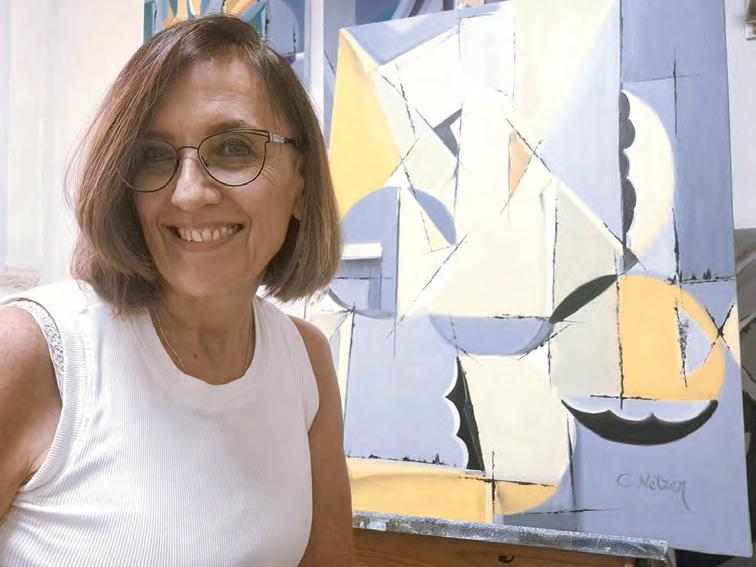
By Adam Reinherz | Senior Staff Writer
Clari Netzer hadn’t picked up a paintbrush in years. As a child, she enjoyed art but as a teenager and young adult she abandoned the practice; her parents discouraged painting as a profession. Netzer instead earned a communications degree. Time passed. She worked as an imports manager for a cosmetics company. Twenty years ago, however, she again reached for a brush.
“It was 2005 and my oldest son had just been recruited to the army,” Netzer, 64, said by phone from Karmiel, Israel. “There was this sudden realization that he would become a soldier.”
That moment influenced Netzer’s path, but the person who actually pushed her toward a canvas was her son, she said. “He was the wise one who gave me a wake-up call and said, ‘You know, Mom, when I was a little boy you always said you would become a famous artist. So start painting again.’”
Netzer heeded his message and bought supplies. Over the course of two years she refined her technique and developed a plan. Eventually, she left her job and pursued full-time painting.
“I had a lot of support from my family,” she said.
In 2007, Netzer started exhibiting her work. Since then, the award-winning painter has shown her colorful creations in France, Israel, Italy, Spain, the United Kingdom and across the United States.
Netzer’s painting, which focuses on her Israeli and Mexican identity, features a blend of abstraction and familiarity. Each piece has a geometric quality, but the binding message is a sense of “tikkun” or “repair,” she said.
The metaphors, and “heightened narrative inside each artwork,” are found within Netzer’s coats.
Her process begins, she said, by applying an initial layer of paint. She has to wait until it dries, “otherwise it will be a mess.”
New layers cover old ones, but earlier paint doesn’t disappear.
Black textured lines are applied. The lines cut through circles. New shapes emerge. Layer on top of layer gives each work “wings,” she said. “I want to set my painting free.”
Netzer’s technique takes each work from “chaos to harmony,” she continued. “I fight with my artwork — not only the geometric shapes — I really look to make order and harmony from the chaos and disorder.”
The artist, who has called Karmiel home since 1991, is familiar with Pittsburgh (the cities are connected through the Jewish Agency for Israel’s Partnership2Gether Global Network). Before Oct. 7, 2023, and during nearly two years of continuous war, a stream of visiting Pittsburghers routinely passed through Karmiel and the Misgav region.
The war has taken its toll, Netzer said. Although her painting has reached new heights, “all the trauma and sadness is now imprinted in my work.”
Fellow Karmiel resident Ronit Itzikson Feldman opened her gallery, We Art, in March 2023. Since then, the gallery has closed three times due to Israel’s conflicts with Hamas, Hezbollah and Iran.
“There was supposed to be this large group of teachers from Pittsburgh who were going to visit the gallery this summer, but because of the war they didn’t come,” Feldman said by phone from Karmiel.
B efore the trip was postponed, educators spent a year preparing with Classrooms Without Borders.
Tsipy Gur, founder and executive director

of the Pittsburgh-based organization, said she’s looking forward to introducing the Pittsburgh group to Feldman and We Art when the trip occurs.
We Art is a refuge, as art is essential to pushing through difficult periods, Gur said.
Karmiel is located fewer than 50 kilometers from the Lebanese border. Since Oct. 7, the northern Israeli city has been targeted by numerous rocket attacks.
It’s ironic that war has forced the gallery to close three times, Feldman noted. “This is a place for peace.”
Feldman touted the space’s offerings. Along with hosting various exhibitions, We Art features regular courses; each week, three or four classes introduce “different ideas and different kinds of art,” Feldman’s husband Ofir Feldman, 42, said. “One of the first people who did a full course was a Druze artist.”
We Art students range in age from about 16-90, Ronit Feldman, 43, said.
The gallery serves a “mixed” clientele of Jews, Christians, Muslims and Druze, she added. “We do a lot of jazz in the gallery. We do a lot of music. We do a lot of everything.”
In addition to furthering artistic opportunities in Karmiel, the gallery honors the memory of Amit Mann, an Israeli paramedic and paramedic course instructor who was murdered on Oct. 7 while saving lives in Kibbutz Be’eri.
“She was amazing,” Feldman said of Mann. Pittsburghers should appreciate what’s transpiring in Karmiel, Gur said. There must be more done to “support Israeli artists and galleries.”
Feldman, whose familiarity with Pittsburgh stems from her daughter’s participation in the Diller Teen Fellows program and her niece’s role as a shinshin, said she appreciates the sentiments shared abroad.
She hopes Pittsburghers find their way to Karmiel and the gallery.
“These two years have been a nightmare. It’s a very difficult time to live in Israel,” she said. “The art is healing, and this is what is important to me.” PJC
Adam Reinherz can be reached at areinherz@pittsburghjewishchronicle.org.
Ruthie Cohen and Charlie Kramer announce the birth of Joplin Paige Berrebi, daughter of Erin Cohen Berrebi and Steven Berrebi. Joplin Paige is named after her paternal cousin and Paige is for Philip Barry Cohen, her late grandfather. She is also the granddaughter of Roland and Bobbi Berrebi.
With great joy, Toby and Gene Tabachnick of Mt. Lebanon announce the birth of their grandson Adrian Kenny (Adir Chaim) Chiel. Adrian, born on July 15, 2025 (19



With great joy, Freada and David Jaffe announce the engagement of their daughter, Jennifer, to Asaph Kupferman, son of Dr. Michael and Debra Kupferman. Jennifer
Iwas walking to shul last Shabbat with my friend Rifka, whose daughter had just returned from a post-high school adventure in Europe with her friends.
“They had a great trip,” she told me, “really memorable.”
“Did you see pictures?” I asked. Her face lit up. “Yes! Some really terrific ones. But one photo really struck me — Sarah and her friends on the steps of the Coliseum in Rome.”
“How exciting,” I said. “They really hit all the hotspots.”
“Yes,” Rifka smiled, “but here’s what made it so powerful for me. We had taken the kids to Rome years ago, on a family trip. And I suddenly remembered — when we were at the Coliseum back then, Sarah must have been 7 or 8. While we were all marveling at the ruins and the history, she was completely captivated by a line of black ants inching
Return us to You, God, and we shall return; renew our
That turning — hashiveinu — isn’t about going backward. reclaiming the heart of who we are. It is the beginning from sacrifice to prayer, from priestly hierarchy to structures, from disconnection to reconnection.
heart of who we are. It is the beginning of transformation: from sacrifice to prayer, from priestly hierarchy to evolving leadership structures, from disconnection to reconnection.
By the time this article appears in print, it will be Rosh beginning of a new month and a new phase in this the Torah onward (see Bamidbar 10:10), Rosh Chodesh celebration: We sing Hallel, we speak of renewal, we hope.
By the time this article appears in print, it will be Rosh Chodesh Av — the beginning of a new month and a new phase in this journey of grief. From the Torah onward (see Bamidbar 10:10), Rosh Chodesh has been a time for celebration: We sing Hallel, we speak of renewal, we mark beginnings with hope.
University of Pennsylvania, in city planning and urban spatial analytics. They plan a Labor Day wedding at a summer camp in the Poconos officiated by their rabbi Rabbanit Dasi Fruchter and Tova’s father Rabbi Perlman. They reside in Center City Philadelphia.


“Children are such keen observers,” I said. “Exactly,” she nodded. “She couldn’t have cared less about the grandeur or power of ancient Rome. It was those ants, right there at her feet. That moment has stuck with me for years — it reminds me that what’s right in
I nodded, thinking about how much that resonated. “Maybe we could all use more of that kind of focus — especially in a world as
And so our conversation continued — about perspective, grief, hope and
As I write these words, the Hebrew calendar reads 18 Tammuz. Just yesterday, we entered a sacred period known as Bein — the Three Weeks, beginning with the fast of 17 Tammuz and culminating in Tisha B’Av. This is a time of collective mourning for the Jewish people, a season when we remember the loss of our sovereignty in the Land of Israel and the destruction of the Beit HaMikdash, which
These are not simply historical losses — they are existential ruptures. The physical and spiritual disconnection these events represent is still present in Jewish consciousness today. Perhaps especially today. We mark this time by refraining from music, haircuts and weddings. We sit low and chant Eicha, imagining the streets of Jerusalem
But even in the darkest moments of Tisha
In the final hours of the fast, as we begin to rise from the floor and begin the long arc toward healing, we chant:
Return us to You, God, and we shall return; — isn’t about going backward. It’s about reclaiming the
And yet, Rosh Chodesh Av begins the most intense Jewish calendar — the Nine Days that lead to Tisha
And yet, Rosh Chodesh Av begins the most intense days of mourning in the Jewish calendar — the Nine Days that lead to Tisha B’Av.
As the Mishnah says:
As the Mishnah says:
When the month of Av enters, we diminish [acts of] joy.
When the month of Av enters, we diminish [acts of]
How can one day hold both joy and sorrow?
How can one day hold both joy and sorrow?
Perhaps this is exactly the point. The Jewish calendar is not a linear path from grief to celebration; it is a dance between brokenness and hope, loss and renewal. Rosh Chodesh Av teaches us how to hold two truths at once. As Jews, we carry inherited trauma alongside profound resilience. We hold both. We must.
Perhaps this is exactly the point. The Jewish calendar from grief to celebration; it is a dance between brokenness and renewal. Rosh Chodesh Av teaches us how to As Jews, we carry inherited trauma alongside profound both. We must.
Even as science tells us that blood cells regenerate every few weeks, I still say: This paradox runs in our blood.
Maybe the wisdom of this season is not only in its grief, but in the shape of its arc — from the awareness of Rosh Chodesh, through the pain of Tisha B’Av, and eventually toward the hope of Nachamu (Isaiah’s message of comfort that follows). The rhythm forces us to look inward, to feel what we often suppress, to slow down and see clearly.
To pay attention.
Like Sarah, age 7, watching ants cross a sun-warmed stone in Rome while history loomed in the background.
There is so much to grieve this year. From war and hostages in Israel, to increasing antisemitism and painful brokenness here in America — we feel these in our families, communities and within ourselves. But perhaps there is also something to see right in front of us.
Rosh Chodesh Av offers a strange kind of invitation: not to escape our pain, but to observe it with clarity. To bear witness to what’s unfolding. To notice what is small and real and steady, even in the shadows of ruins.
Over the next nine days, through our fasting, prayer and memory, may we find the strength to look clearly at what is right in front of us. And in doing so, may we discover within ourselves the resilient creativity of our ancestors — the ability to rise, to rebuild and to renew our days once more.
Chodesh Tov and may we know comfort soon. PJC
Return us to You, God, and we shall return; renew our days as of old.
Rabbi Kara Tav is a Pittsburgh-based educator, chaplain and counselor. This column is a service of the Greater Pittsburgh Jewish Clergy Association.
isn’t about going backward. It’s about reclaiming the heart of who we are. It is the beginning of transformation: from sacrifice to prayer, from priestly hierarchy to evolving leadership structures, from disconnection to reconnection.
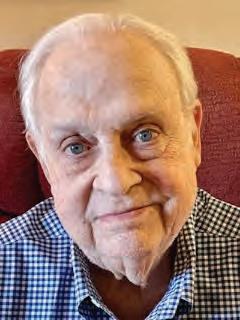
ADELSHEIM: Richard Niles Adelsheim, age 91, passed away on Thursday July 17, 2025, in Scottsdale, Arizona. Richard was born in Pittsburgh in 1933 to Silas and Peggy Adelsheim, who preceded him in death, along with his older brother Carl. After graduating from Taylor Allderdice High School, he received his BS from the University of North Carolina. He remained a proud Tar Heel all his life. In 1955, Richard married his high school sweetheart, Marcia Saul, to whom he remained devoted until her passing in 2019. Richard served as an accountant in the U.S. Navy for two years before working at ANCO Corporation with his father and brother. Richard served as president of Rodef Shalom Congregation’s Brotherhood and as a member of the temple’s board. Richard enjoyed playing tennis and watching sports, and was appreciated by many for his kindness, loyalty, friendship and sense of humor. Richard’s ultimate joy came through his love, commitment and dedication to his family. Richard is survived by his children Steven Adelsheim and Tara Ford, Nancy Adelsheim and Patricia Martin, and Jim and Leslie Adelsheim; grandchildren Erin Ford and Ethan Gallegos, Julia Adelsheim, Sara and Nick Kanthadai, Kade Adelsheim and Truc Anh Kieu, Rachel Adelsheim and Emily Hamilton, Zoe Adelsheim; great-grandchildren Wallis Niles Ford Gallegos, Arthur Lyon Ford Gallegos and Sophia Kanthadai; nephew Mark Adelsheim (Sue) and niece Sherry Small (Mitch). Services at Rodef Shalom Congregation, 4905 Fifth Avenue (at Morewood), on Monday, July 28, 2025, at 11 a.m. Visitation at temple one hour prior to service (10-11 a.m.). Interment West View Cemetery of Rodef Shalom Congregation. Contributions can be made to a charity of your choice. Arrangements entrusted to Ralph

FIRMAN: Anna Lee Firman, on Tuesday, July 15, 2025. Beloved wife of the late David Firman. Loving mother of Samuel Firman, Irving (Mindy) Firman and the late Bernard Firman. Sister of Wilfred (Carol) Kolko and Brenda Castleforte. Cherished grandmother of Christopher Firman, Brittany (J.R.) Kenna, Michael Firman, Lauren Firman, Brandon (Charlie) Firman, Eli Firman, Brian Firman, Lucy Firman; great-grandmother of Eleanor Kenna and Caroline Kenna. Anna Lee was a devoted member of B’nai Brith Women for many years and served as president of the organization. More than anything, Anna Lee was proud of and loved her children and grandchildren. Services were held at Ralph Schugar Chapel, Inc. Interment Beth Shalom Cemetery. In lieu of flowers,
contributions may be made to the American Cancer Society, 106 Merchant Lane, Pittsburgh, PA 15205. schugar.com
MOSCOV: Fern S. Moscov, on Monday, July 14, 2025. Beloved wife the late Joseph L. Moscov. Loving mother of Amy Moscov Charleswarth (Richard) of Oakland, California, Judith L. Moscov and David A. Moscov (Ericka Fink), all of Pittsburgh. Sister of the late Lea Szklinski. Sister-in-law of the late Shirley and Sidney Stark, and Abram Szklinski. Beloved grandmother of Isaac Moscov Charleswarth and Joseph Moscov Charleswarth. Also survived by nieces and nephews. Services and interment private. Contributions may be made to a charity that benefits children. Arrangements entrusted to Ralph Schugar Chapel, Inc. schugar.com
STEIN: Jules L. Stein, age 73, passed away on Saturday, July 19, 2025. He was the son of the late Marvin and Faye Stein and a lifelong resident of Squirrel Hill. He is survived by his wife of 50 years, Jan; children Sam (Liz) and Jessica (Carlos); and grandchildren Atlas and Caleb Stein. He also leaves behind his brother, Edward, and sisters, Rachel and Harriet, Aunt Anne Kranzler, and many nieces and nephews. From Colfax to Allderdice, from trumpet to marathon running, to years of service at Western Psych, his winning personality not only made him a gifted salesman, but also drew people to him, establishing deep connections and friends for life. But mostly he was a true family man, a devoted and loving husband and father. Graveside services and interment were held at Kether Torah Cemetery. Donations in his memory may be made to UPMC Family Hospice, 310 Fisk Street, Pittsburgh, PA 15201.
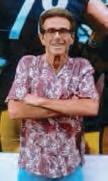


In keeping with the tradition of honoring sacred texts, the Jewish Cemetery & Burial Association, in partnership with Ralph Schugar Chapel and Urbach Memorials, will be holding a Jewish book burial (Genizah) to respectfully lay to rest worn-out or damaged religious items.
We invite members of the community to drop o the following items for proper burial:
• Worn or damaged siddurim (prayer books)
• Chumashim, Tanakhim, and other holy books
• Tallitot, te llin, tzitzit
• Pages containing G-d’s name or Hebrew sacred texts
• Other religious items no longer in use






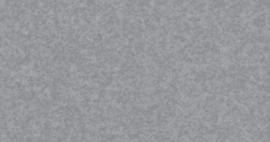








DROP-OFF LOCATIONS:
Rodef Shalom Congregation Parking Lot August 3, 4, 5 (7:00 am - 8:00 pm)












4905 Fifth Avenue, Pittsburgh, PA 15213
Ralph Schugar Chapel - 412-621-8282 (call for appt, SMALL AMOUNTS ONLY)
5509 Centre Avenue, Pittsburgh, PA 15232
For other possible drop-off arrangements, please call the JCBA at 412-553-6469.
The Community Book Burial will be on Sunday, August 10th. More information will follow.
PLEASE NOTE: Items for the book burial will not be accepted AT the burial.



plots, to read our complete histories and/or to make a contribution, please visit our website at www.JCBApgh.org, email us at o ice@jcbapgh.org, or call the JCBA o ice at 412-553-6469.
Jewish Association on
from the following: A gift from ... In memory of...
Anonymous
Evan G Adams
Cheryl Bloch
Cheryl Bloch
Hedy M Caplan

.Nathan Fishman
Gertrude M Adams
.Morris Glasser
Eugene Barovsky
.Gertrude Mitchel
Pauline Dobkin . Frank Sussman
Richard Glick
Amy R Kamin
.Cheri Glick Jak
Samuel Honig
Randolph Malt Max Malt
Dr & Mrs Marvin A Perer
Marcia & Joel Platt
Herbert Shapiro
Ethel Perer
Robert Platt
Ben Shapiro
Karen K Shapiro .Ruth Kuperstock
Jay Silberblatt
.Meyer Silberblatt
Contact the Development department at 412-586-2690 or development@jaapgh.org for more information. THIS WEEK’S YAHRZEITS —
Sunday July 27: Louis Gerson, Ruth Wein Gordon Herskovitz, Samuel Honig, Benjamin Lebby, Fay Levin, Charles Gershen Lisowitz, Florence B Perilman, Sarah Rosenberg, Manuel Siniakin, Samuel Nathan Unger, Marcus D Wedner, Louis M Witkin, Meyer Zarkin
Monday July 28: Frank Burnstein, Matel Cooper, Rae Danovitz, Charles Goldberg, Edwin Goldberg, Louis Harris, Mollie Lappin, Anna Levenson, Harry Levine, Nathan Lewis, Harry W Liebman, Sol Rosenblum, Ruth Rebecca Sherman, Meyer Silberblatt, Elizabeth Young
Tuesday July 29: Norman Amper, Samuel Fargotstein, Hilda Goldstein, David Lee Greenfield, Esther F Horelick, Martin M Kramer, Jessie W Levenson, Ruth Grinberg Lincoff, Merle M Pearlman, Dorothy S Pollock, William S Winer
Wednesday July 30: Rose Cramer, Bessie Rini Glass, Dr Abraham D Goldblum, Sophia Goldstein, Morris L Kaufman, Helen S Luptak, Gertrude Mitchel, Alvin J Moldovan, Benjamin Olender, Eli Racusin, Harry Rapoport, Rae Rosenthal, Rose Smith, Philip Wekselman
Thursday July 31: Harry Adler, Mollie R Bennett, Marvin B Bernstein, Hannah Bromberg, Ida Cantor, Robert Congress, Dorothy Crutch, Sophia Freedman, Helen Handelsman, Dora Kaufman, Sarah Kleinerman, Gizella Krause, David Levine, Anna G Rosenthal, John Schwartz, Leonard Skirboll, Irene Weitzman
Friday August 1: Lt Richard Stanley Ackerman, Jack Neville Berkman, Ben Cowen, Albert Edelstein, James J Gluck, Rebecca Goisner, Leonard Klevan, Samuel Maysels, Jacob Melnick, Rose Paul, Ethel R Perer, Bernard A Price, Molly Schwartz, Leah Shapiro, Max L Siegle
Saturday August 2: Lillian Brody, Sarah Cohen, Pauline Davis, Nathan Fishman, Lawrence M Grossman, Anne Levine, Ethel Linder, Ida Mandel, Maurice L Moritz, Bernard Murstein, Judith Ashinsky Rosen, Martha Schwortz, Jacob Sheffler, Jack Sherman, Sidney Siegman, Harold Leighton Winkler


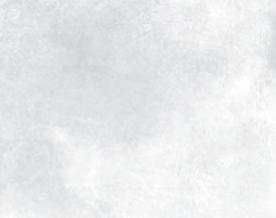

“Not everything that weighs you down is yours to carry.”





By Andrew Silow-Carroll | JTA
Rabbi Neil Danzig, a longtime professor of rabbinics at the Jewish Theological Seminary in New York and an authority on the post-Talmudic Babylonian scholars known as the Geonim, died July 4. He was 74.
A longtime resident of Teaneck, New Jersey, he was buried in Israel.
As a scholar of medieval rabbinic literature, Danzig explored the halachic, or Jewish legal, writings of the Geonim, the Jewish leaders and scholars during the late sixth to mid-11th centuries in what is now Iraq. The Geonim secured the Babylonian Talmud as the central canonical work of rabbinic literature.
Danzig was able to unlock the mysteries of the period thanks to a trove of documents kept in the Cairo Geniza, a centuries-old storehouse for discarded Jewish texts that was re-discovered by the future JTS scholar Solomon Schechter in the late 19th century.




Danzig drew on these legal monographs, unattributed literary works, letters and documents in his best-known work, “Mavo le-Sefer Halakhot Pesuqot” (1999). Poring over manuscript evidence and Cairo Geniza fragments, Danzig was able to reconstruct the text of a major legal work attributed to Yehudai Gaon, a prominent figure in the Geonic period, which had been lost for centuries.
“A towering figure in the study of medieval rabbinic literature, he contributed mightily to our understanding of the halakhic writings of the Geonim (post-Talmudic Babylonian scholars) and the Cairo Geniza,” JTS said in a statement announcing Danzig’s death.
Danzig’s publications included numerous studies on the legal rulings of the Geonim, medieval scribal practices and the transmission of the Talmud from oral to written media in the medieval period. He also wrote the catalogue of the Cairo Geniza fragments stored in the E.N. Adler Collection at JTS.
Danzig was also widely admired as a teacher. Rabbi Ethan Tucker, president and rosh yeshiva at Hadar, studied for his Ph.D. under

Danzig. In a tribute, he recalled that Danzig had “two striking qualities: One, he seemed to know everything about rabbinic literature, and, two, he made an effort to organize it for himself and his students,” wrote Tucker. “What a joy to find a scholar and a teacher who has the gift of comprehensive knowledge and the ability and the drive to organize it for others.”
In an essay written in 2014, Noah Bickart, now the Mandel Chair in Jewish Studies at John Carroll College in University Heights, Ohio, recalled seeking Danzig’s help in identifying what looked like a manuscript of the Babylonian Talmud, somehow repurposed as the cover of an early 17th-century book of church music. Applying his expertise in the language and even paper quality of medieval texts, Danzig found three clues that enabled Bickart and another scholar to identify the fragment as a Jewish text written somewhere in Europe in the 12th or 13th century.
Danzig was born in Brooklyn, New York. He earned his bachelor’s, master’s and doctoral degrees at Yeshiva University, and was ordained as a rabbi at its Rabbi Isaac Elchanan Theological Seminary. He joined the JTS faculty as a visiting associate professor in 1994, and became a professor of Talmud and Rabbinics and Geonic Literature in 1995. He also co-directed the Friedberg Genizah Project at New York University from 19992002, and served as director, from 1986-1995, of the Rabbinic Civilization Core program at Reconstructionist Rabbinical College.
Predeceased by his wife, Rivka Ausubel Danzig, he is survived by his three children, David Danzig, Hayyim Danzig and Sarah Danzig, and nine grandchildren. PJC
IN RE: PETITION OF TEMPLE B’NAI ISRAEL OF MCKEESPORT PENNSYLVANIA, A NON-PROFIT CORPORATION TO APPROVE A FUNDAMENTAL CHANGE; Case No. 02-25-4114 in the Orphan’s Court Division of the Court of Common Pleas of Allegheny County, Pennsylvania.
Notice is hereby given that the Court has set a hearing on the Petition of Temple B’nai Israel of McKeesport, Pennsylvania to approve a Fundamental Change in the form of the transfer of the ownership and management of their cemetery (located in Versailles Borough, Allegheny County, Pennsylvania), and the transfer of certain funds held by them to the Jewish Cemetery and Burial Association of Greater Pittsburgh.
The hearing will be held in the Orphans’ Court Division, Court of Common Pleas of Allegheny County, Pennsylvania, 437 Grant Street, 17th floor, Pittsburgh, Pennsylvania on August 21, 2025, at 11.00 A.M. before the Honorable Hugh F. McGough. Any interested person is invited to attend. Information may be obtained from Robert J. Garvin Esq., Goldberg, Kamin & Garvin LLP, 437 Grant Street, Suite 1806, Pittsburgh, Pennsylvania 15219, phone (412) 281-1119; Attorney for Petitioner.

Contact me today to discuss all of your real estate needs!
Sherri Mayer, Realtor Squirrel Hill Office C: 412-760-0412 O: 412-421-9121x225 sherrimayer@howardhanna.com HowardHanna.com

5125 Fifth Ave. 2 & 3 Bedrooms Corner of Fifth and Wilkins Spacious 1500-2250 square feet ”Finest in Shadyside” 412-661-4456 www.kaminrealty.kamin.com





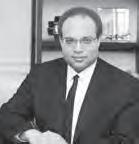





Smith-Rosenthal Team
Jason A. Smith & Caryn Rosenthal Jason: 412-969-2930 | Caryn: 412-389-1695 Jasonasmith@howardhanna.com Carynrosenthal@howardhanna.com

Baum Blvd. Pittsburgh PA 15232 Shadyside Office | 412-361-4000

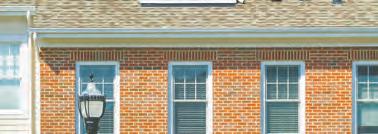


















Amy Weiss to schedule your advertising aweiss@pittsburghjewishchronicle.org 412-613-0697 advertising@pittsburghjewishchronicle.org












July 27, 11 - 2pm
Donate your clothes, houseware, and furniture items* to Thriftique. All proceeds benefit our mission to promote increased equity through the empowerment of women.
*We cannot accept:
• cribs, car seats, and other baby equipment
• medical equipment

• VCRs, computers, printers, other electronics
• used kitchen appliances



By Andrew Rich | Special to the Chronicle




























For almost 40 years, the Rodef Shalom Biblical Botanical Garden has immersed visitors in a landscape reminiscent of what life might have looked like in biblical times.
The space continues to be one that fosters community as well as education.
The garden broke ground in 1986 before officially opening a year later, thanks to the efforts of the late Rabbi Walter and Irene Jacob. While the garden has evolved over time, its purpose has largely remained the same.
The garden offers a community-first environment that is different from what one might experience inside the walls of a synagogue, where decision-making falls up on the congregation’s leadership. In the garden, though, it is the community that comes together to make decisions impacting the outdoor space, according to Dasya Petranova, the director of the garden.
Walter and Irene Jacobs saw the garden “as a way to make the past tangible to the future,” Petranova said. On most Sundays, Walter Jacob could be found in the garden, tending to the plants and trimming the hedges. Since taking the reins in 2022, Petranova has shared that same passion.
Carrying on the mission established by the Jacobs, Petranova was faced with a tough task. Before she took over, the garden “was completely filled in with shrubs and phragmites, which is an invasive species,” she said. “I came in and cleared those out with a small hand chainsaw and digging implements.”
Petranova has also made improvements to the space. For instance, she has established a rock garden, which allows for plants that are native to Israel to flourish. She also plans to plant an arboretum, a botanical garden specializing in trees, with those that are native to Israel.
A water feature, which runs through the center of the garden, is a representation of the bodies of water in Israel. The first pond represents the Sea of Galilee; it is connected to a second pond, the Dead Sea, via a small river, which represents the Jordan River. A waterfall flows over a rock structure meant to symbolize Mount Hermon.
Aside from the plants and water, the garden features a pavilion which serves as a community space for Rodef Shalom and many others. Religious groups, garden clubs, schools, social circles and retirement communities are all examples of users of this community space.
AgeWell at the JCC, Winchester Thurston School, Giant Oaks Garden Club and Women of Rodef Shalom have all used the pavilion space this season. The garden also hosts 20s and 30s Shabbats, the next two of which are on Friday, July 25 and Aug. 22, allowing young Jewish professionals to connect. The 7 p.m. events include appetizers and wine and require registration at rodefshalom.org/lateshabbat.
Rodef Shalom also offers regular story times for children and open tours of the garden.
The garden has allowed for the pursuit of the passions of gardening, Petranova said.
“Humanity,” she stressed, “is connected through time through the environment.” PJC
Andrew Rich can be reached at arich@ pittsburghjewishchronicle.org.

Macher and Shaker
Attorney Bryan Neft recently was named president of the Allegheny County Bar Foundation. Neft recently served as the group’s vice president. The ACBF promotes justice and seeks to improve the community through public service law-related programs as the Allegheny County Bar Association’s charitable arm.


South Fayette High School class of 2025 graduate Samihah Saleem was the co-recipient of the 70th Annual Caplan-Lieber Human Relations Award. The recognition was bestowed by the Pittsburgh Area Jewish Committee and the Jewish Community Center of Greater Pittsburgh.cation which included an essay and profile questionnaire. Prior to graduation, Saleem helped ordinate inclusivity events in the district, participated in the Eradicate Hate Global Summit and co-coordinated a viewing of the “Repairing the World” documentary along with a panel


Sally and Howard Levin Clubhouse members helped ready produce for growth at the reno vated garden outside Community Day School. Along with joining representatives from CDS and Sunny’s Community Garden, Clubhouse members built a shed used to store tools and other supplies at the Squirrel Hill site.


